Synchron World Percussion features percussion ensembles from three regions of the world: West Africa (8 instruments) with a special focus on Senegal, the Middle East (10 instruments) focussing on Iran, and Brazil (11 instruments).
We not only recorded single-hit samples for this Library, but also invited our musicians to present the grooves typical for their country, so the package includes authentic grooves as MIDI files. These grooves can be played and pre-listened in the Synchron Player’s MIDI Loop Player, and from there dragged into your DAW, thus affording you a measure of freedom regarding tempo, dynamics, length, and arrangement. Of course, the grooves can be edited to fit your requirements. Moreover, you have the choice of playing single instruments, selected groups, or the entire ensemble.
Three of the Instruments contained in Synchron World Percussion were already included in previous Synchron Percussion Libraries: the shaker from Synchron Orchestral Percussion I (complete Instrument), the snare from Synchron Drums III (reduced Instrument), and the agogo bells from Synchron Orchestral Percussion III (reduced Instrument).
The Library’s Standard Content includes all Articulations with the microphone positions Close 1 (condenser, mono), Mid (stereo) and Main (Decca tree stereo and center).
Extended Content additionally offers two more Close positions (tube, dynamic), Surround and High Surround positions. These additional microphone positions are used in Stereo Downmix and Surround Mixer Presets.
In order to place the instruments in the familiar Synchron Stage environment, there are three categories of Mixer Presets: Close, Classic, and Ambient, so that the instruments are compatible and can be mixed with our other Libraries. Apart from these, there are separate Ensemble Mixer Presets with little and more room tone which give one the feeling of standing in the middle of the percussion ensemble.
For quicker and easier integration of the grooves into your DAW, we created Vienna Ensemble Projects which are available in the Vienna Assistant’s “Additionals” section. These Projects include all instruments of a rhythm group and are matched to the respective ensembles’ MIDI Files, saving the user loading each instrument individually, and already aligned with the grooves’ MIDI channel assignments. You can find more information below under Working with Vienna Ensemble Projects.
The musicians who played for our library are Ibou Ba from Senegal for West Africa, Hamidreza Ojaghi from the Kurdish region of Iran for the Middle East, and Luis Ribeiro from Brazil.
All the recorded grooves have in common that they are originally used for celebrations – be it in a spiritual way or for dancing. They come from a long tradition and get taught from one generation to the next. So there are always local differences for the same grooves. They rarely get transcribed – an interesting difference to the classical musicians usually recorded at the Synchron Stage, who play what is written in their sheet music. Nevertheless, these grooves are never easy. For example, less than half of the Persian grooves are in 2/4 or 4/4. There even is a traditional celebration groove in 22/8…
Instruments: djembes, sabar drums, talking drums, doum doums, shekere, caxixi, bell straps, cabalonga.
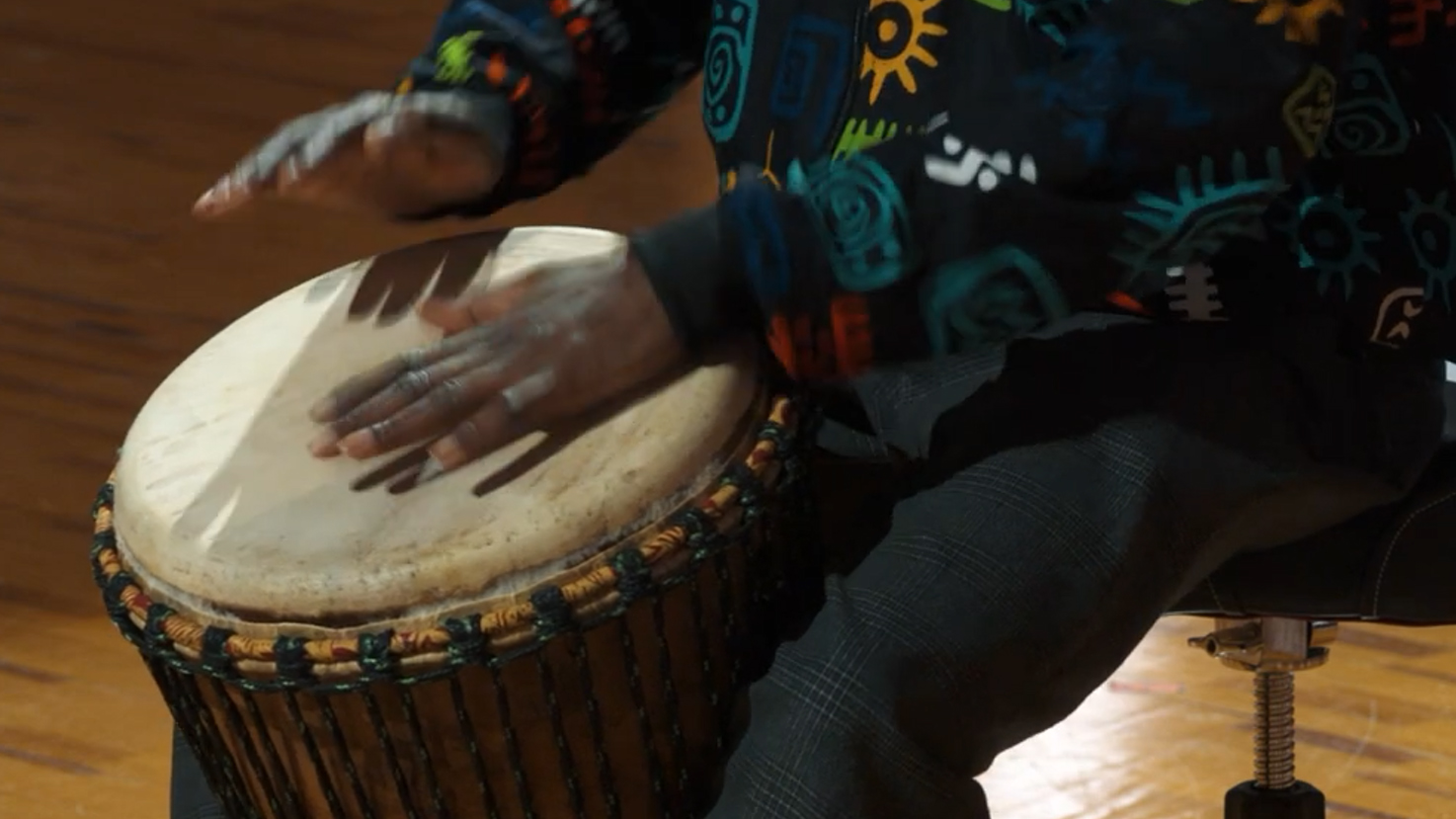
- Instrument type / sound
- A goblet drum with a deep bass, round open strokes and sharp slap sounds.
- Playing technique
- Standing with a stand or sitting between the legs. Played with the hands.
- Cultural background
- Since the middle of the 20th century also wider use in Western countries.
- Role in the ensemble and in MIDI grooves
- The djembe is an important instrument in the ensemble which not only furnishes the basic rhythm, but is also able to play solos. Owing to its higher volume it has no trouble asserting itself.
In Senegal, the djembe is often combined in a set with two sabar drums to play the basic rhythm. In the Preset, the instruments are arranged the same as in front of the player.
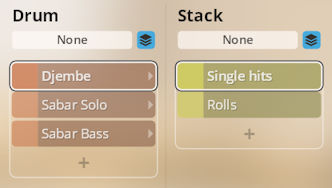
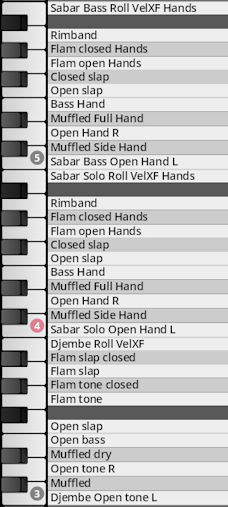
The Preset contains two djembes of different size, each recorded with and without kessings – also lovingly called “earrings” –, an extension of the instrument with rings that can be added and give off a metallic rattle.
- Kessings off/on: C1/C#1.
- Low/high djembe: C2/C#2.
- High Djembe: additional closed slap.

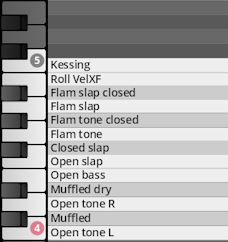
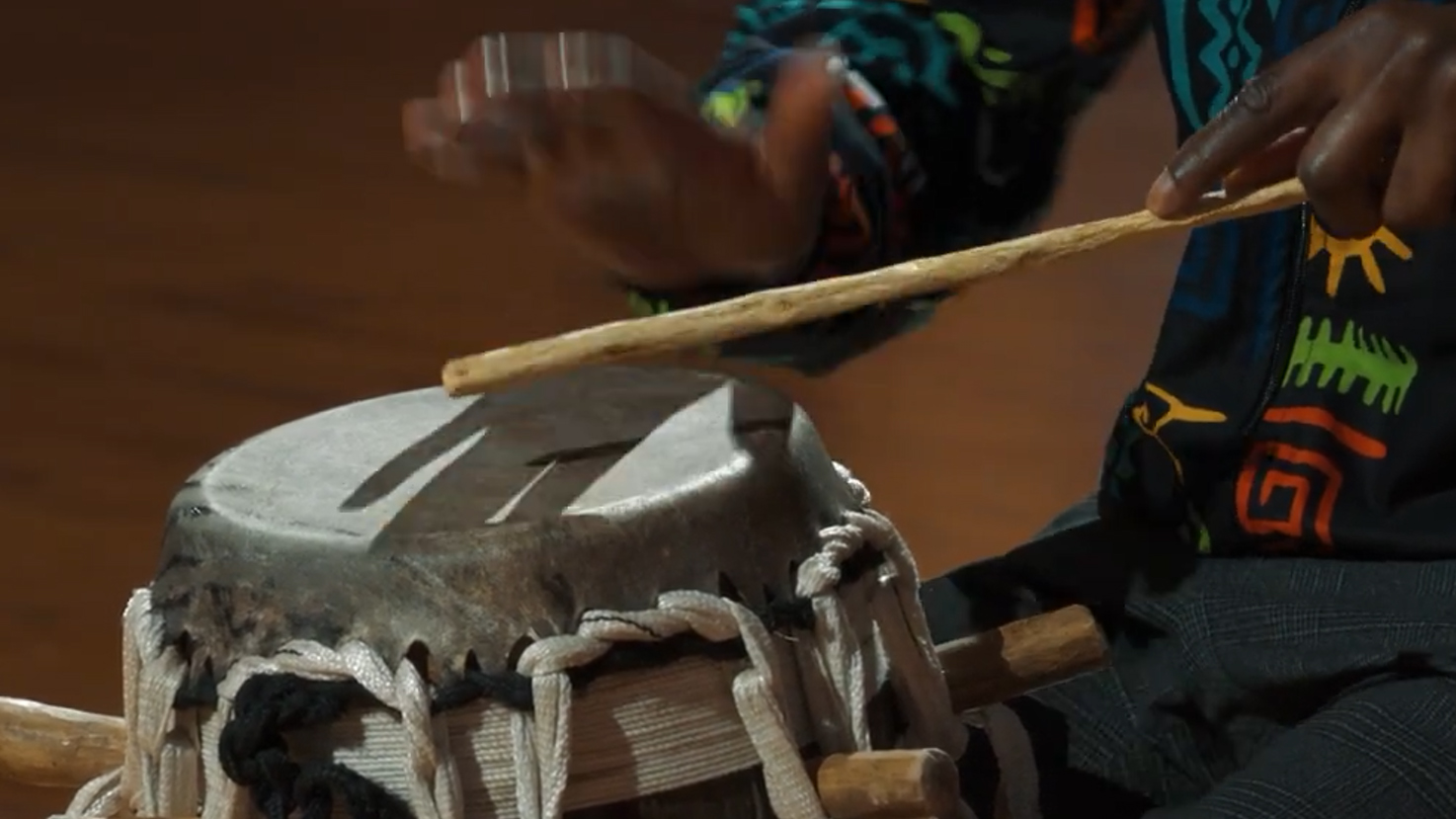
- Instrument type / sound
- An elongate drum with a somewhat muffled sound. However, hits with the stick can sound very sharp.
- Playing technique
- Played with a thin stick in the left hand, and with the free right hand.
- Cultural background
- A typical Senegalese instrument.
- Role in the ensemble and in MIDI grooves
- The sabar is often played in pairs or in a set with the djembe. The higher sabar is often used for solos and is also called “solo sabar”.
The Preset includes two sabar drums.
- Sabar bass/solo: C2/C#2.
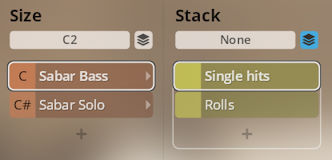
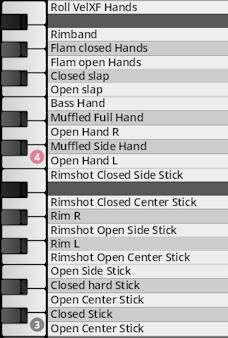
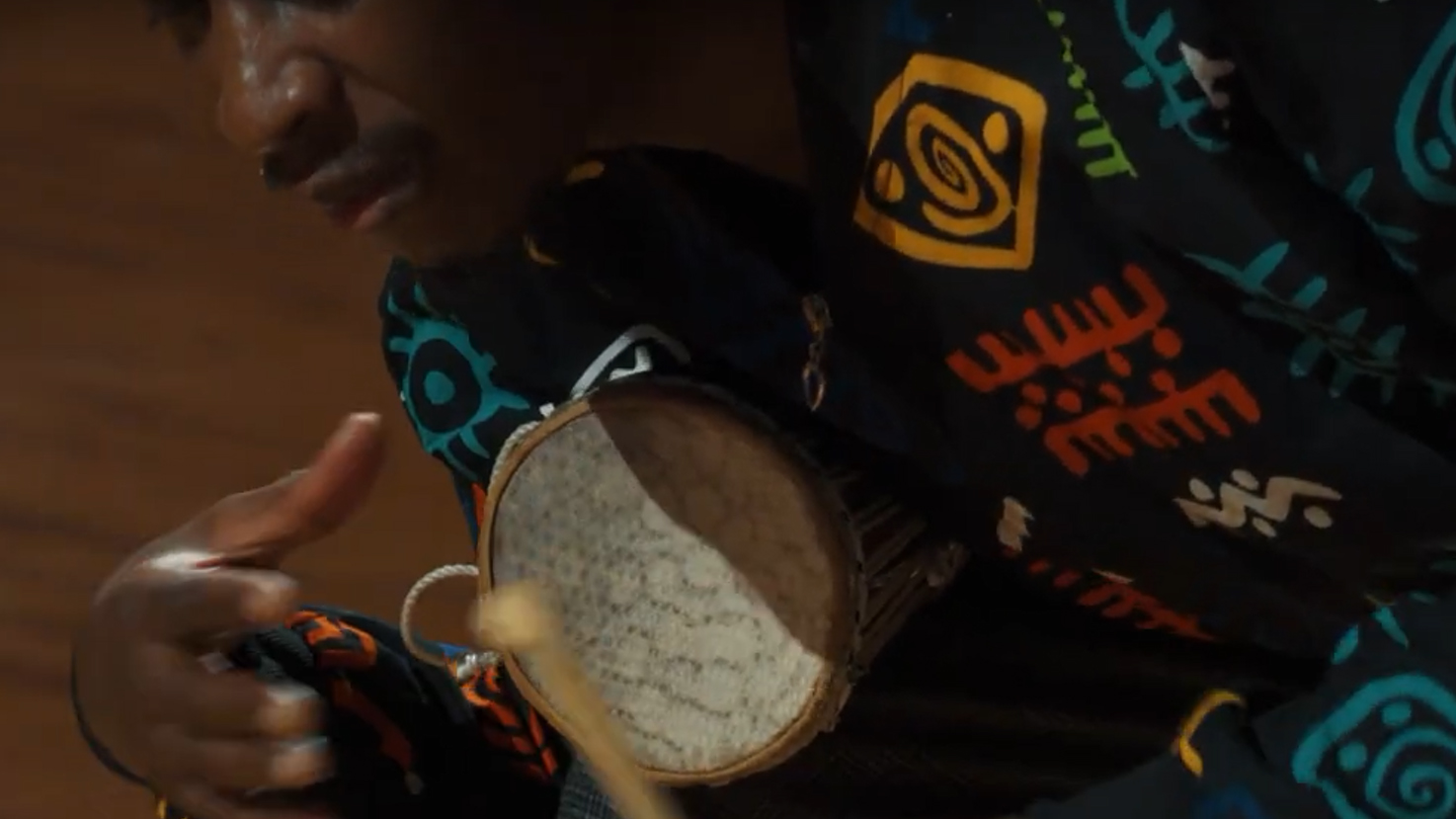
- Instrument type / sound
- An hourglass-shaped drum whose skin tension can be controlled with the arm, allowing the player to change its pitch while playing.
- Playing technique
- The drum is wedged under the player’s arm and played with both hands. One hand holds a mallet whose head is angled by 90°, while the other hand remains free.
- Cultural background
- A West African drum which was also used for transmitting news over distances up to 8 kilometers.
- Role in the ensemble and in MIDI grooves
- The talking drum often plays solos with rapid attacks. Due to its capability to modulate pitch, it takes a similar role as the human voice – hence its name.
Includes two talking drums of different size. The smaller one is especially good for playing solos.
- Talking drum medium/small: C2/C#2.


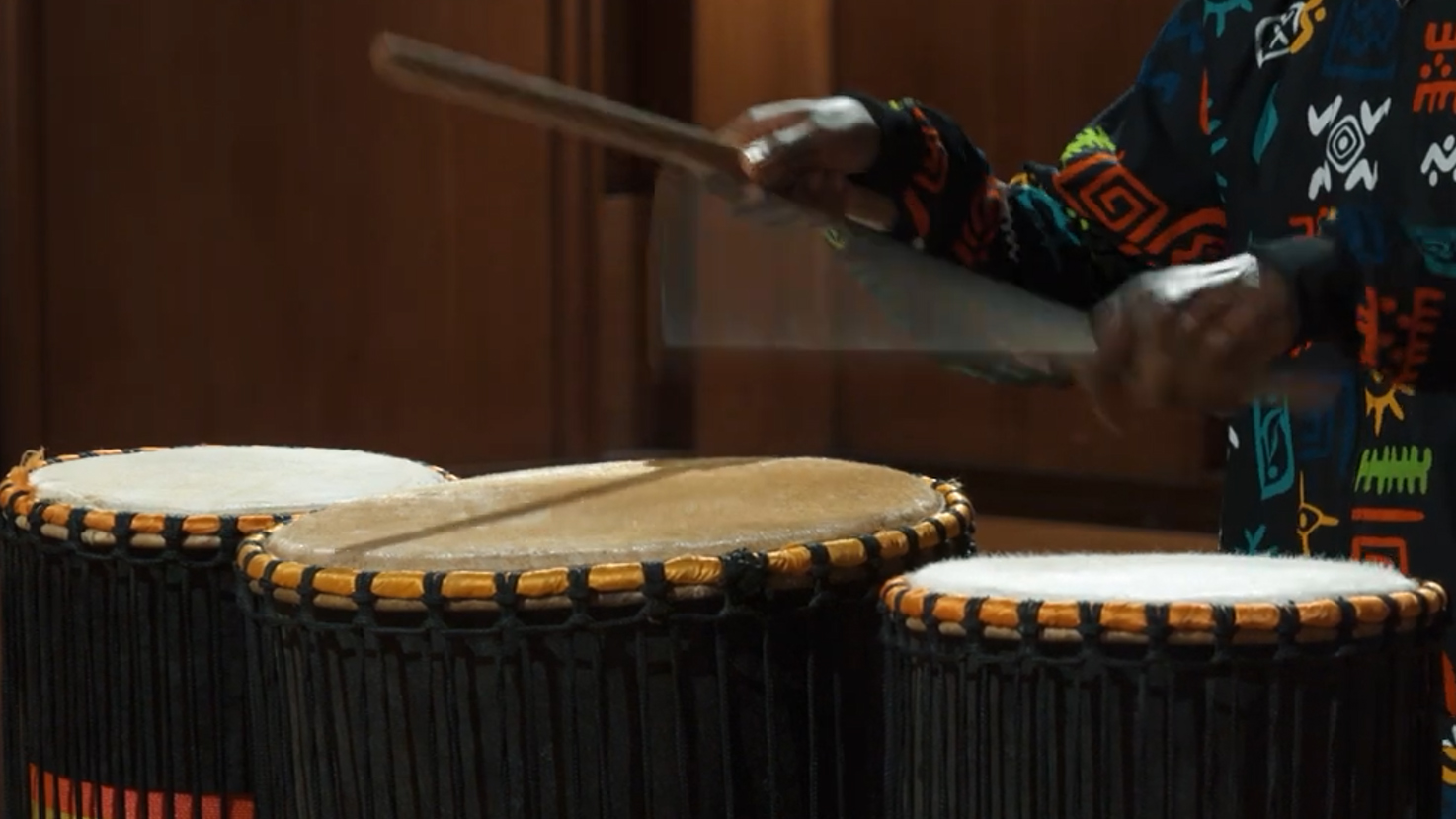
- Instrument type / sound
- The doum doum, also called dundun or dunun, is a larger cylindrical drum with a medium to low pitch.
- Playing technique
- Played with thick mallets, often in a set of three drums.
- Cultural background
- West African drum mainly played in ensembles.
- Role in the ensemble and in MIDI grooves
- The doum doum takes over the bass function and provides the foundation of the grooves.
Since commonly three drums are played in a set, the Preset also allows you to play three sizes at once.
- Mapping: Dundunba C2–E2; Sangban C3–E3; Kenkeni C4–E4.

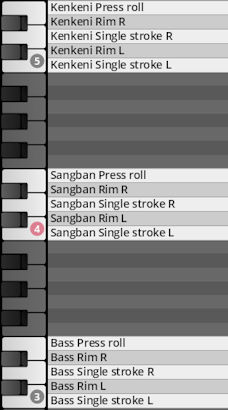
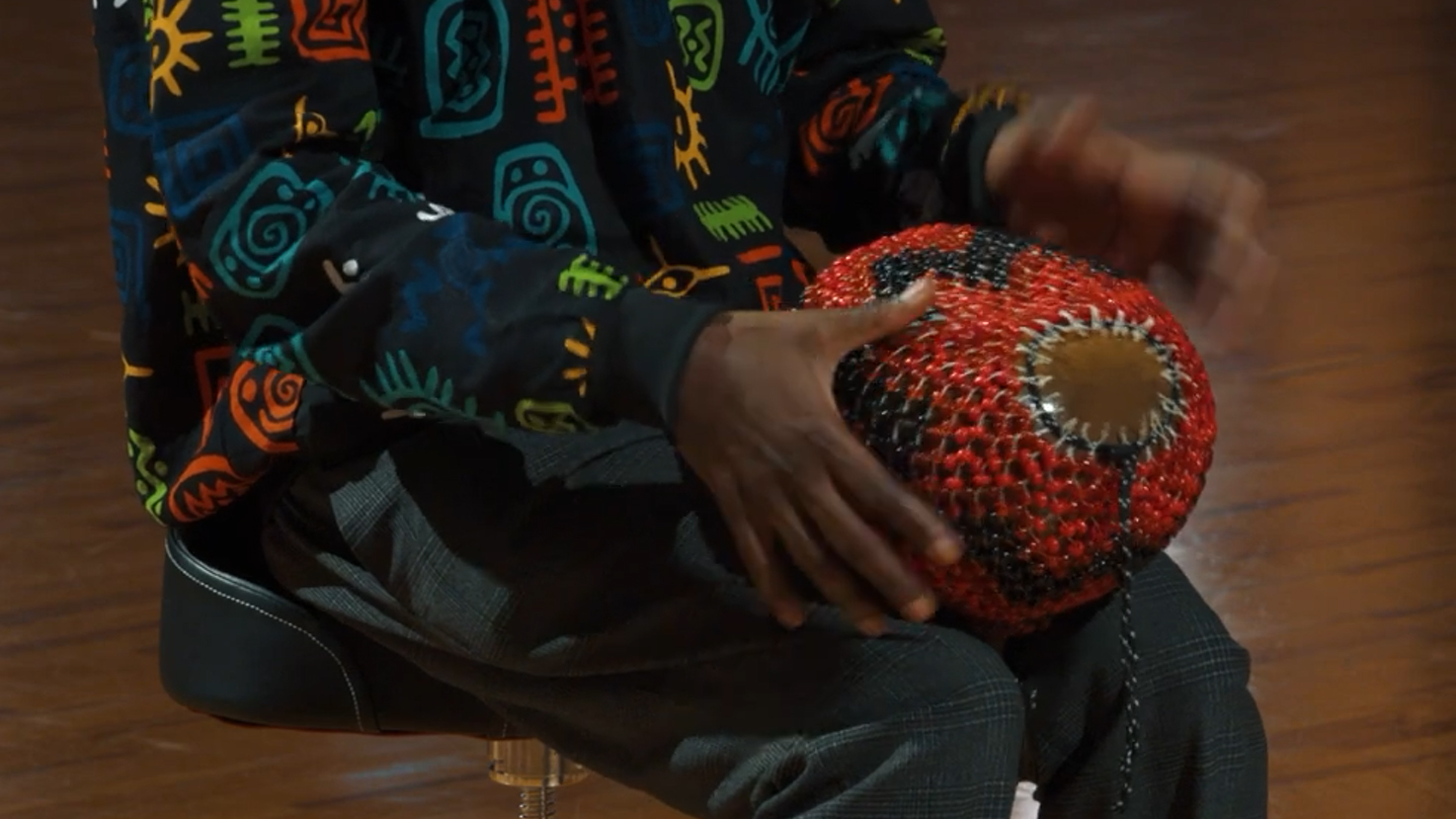
- Instrument type / sound
- The shekere is a dried gourd covered in a net of pearls with a shaker-like sound.
- Playing technique
- The most common playing technique is hitting the net with one’s hands, but of course the instrument can also be shaken. (We didn’t record this, though, as Senegalese grooves don’t employ it.)
- Cultural background
- The shekere is a traditional West African instrument which also found its way into Latin American music.
- Role in the ensemble and in MIDI grooves
- Provides a background layer, often consisting of continuous 16ths.
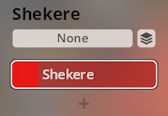
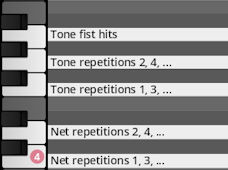
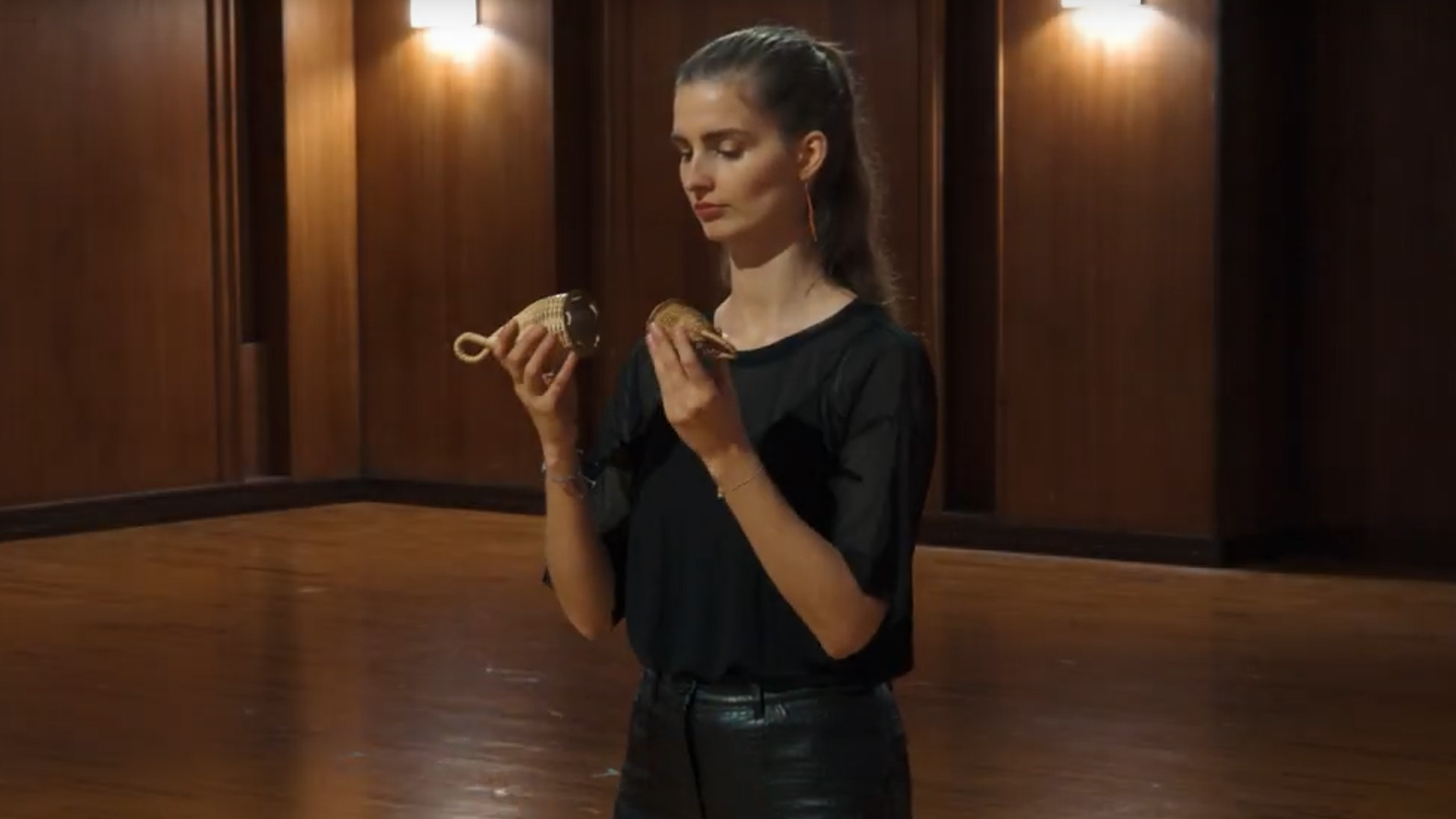
- Instrument type / sound
- A filled shaker instrument with a woven basket-like body and a hard, flat base.
- Playing technique
- Shake it! The sound is softer or harder depending on whether the filling hits with the side or with the base.
- Cultural background
- The caxixi is known throughout Africa and Latin America, and also used in Brazilian grooves in this Library.
- Role in the ensemble and in MIDI grooves
- Background, fleshing out the overall sound.
Caxixis are often played in pairs, so the Preset also allows you to play two sizes at once.
Low: C3–D#4; high: C5–D#6.
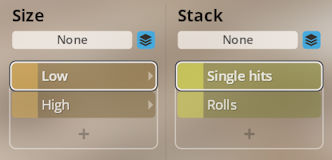

A feature the Preset shares with all other instruments that can be shaken (Caxixi, Bell straps, Cabalonga, Daf, Daira, Riq, Chocalho, Shaker): The keys of the lower octave are mapped with single entire shakes as well as parts of shakes (upbeat, downbeat). This makes it easier to simulate attack behaviour, e.g., by putting a single upbeat (i.e., getting ready to shake) at the beginning of a repetition.
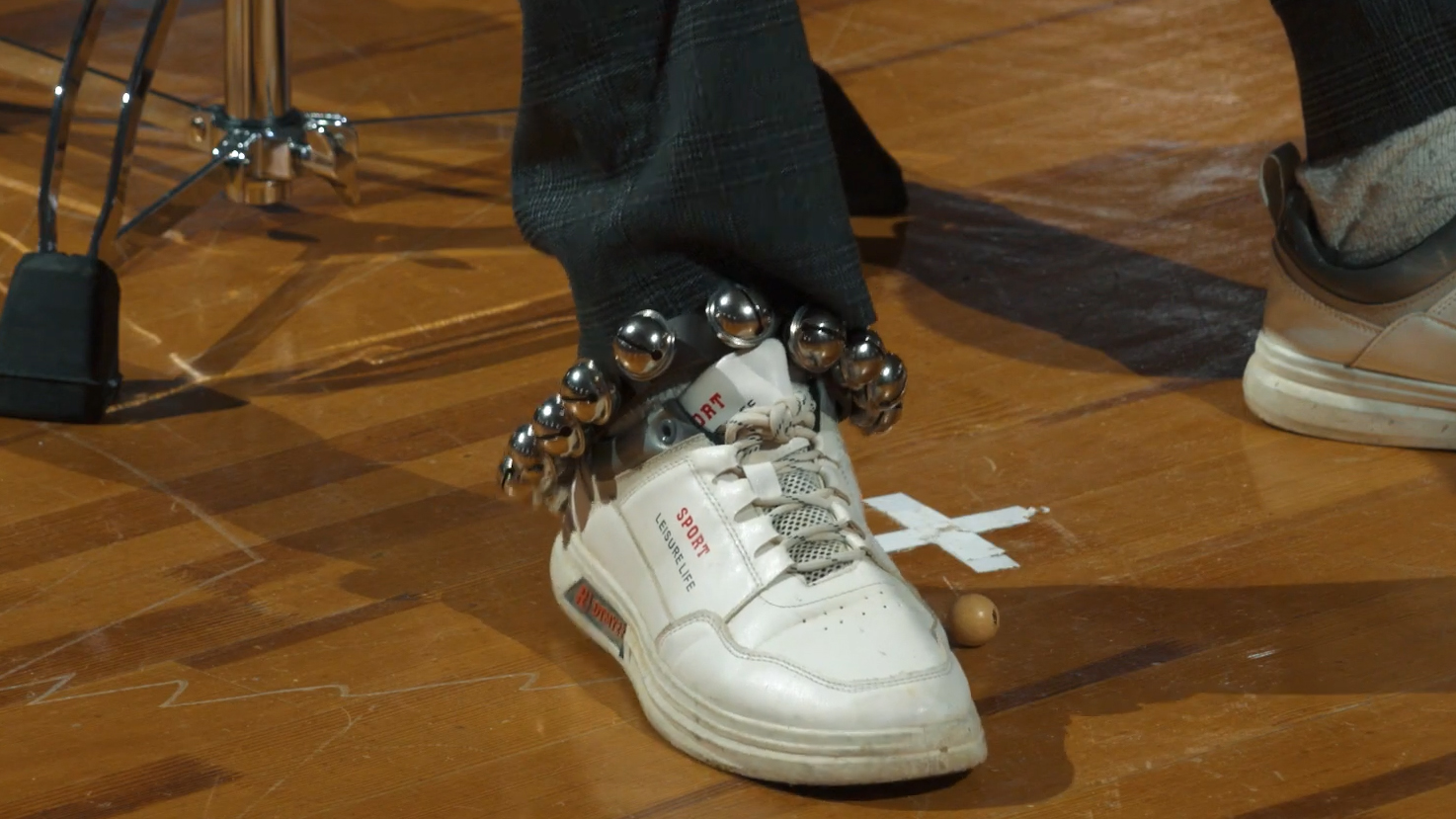
- Instrument type / sound
- Little bells (crotal bells) mounted on a ribbon. The sound is similar to that of jingle bells.
- Playing technique
- The ribbons can be strapped to the leg but also hung on cymbals and hi-hat.
- Cultural background
- It is assumed that crotal bells were first used in early native American cultures and nowaday are used all over the world.
- Role in the ensemble and in MIDI grooves
- Background. Regular strokes to flesh out the sound.
Includes two ribbons of different pitch which can be played individually or together.
- Mapping: low C3–G4; high C5–G6.
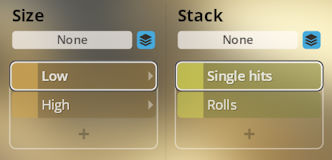
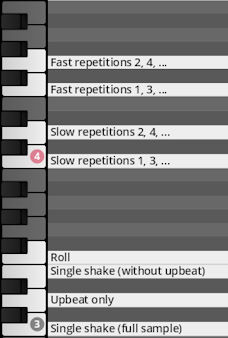
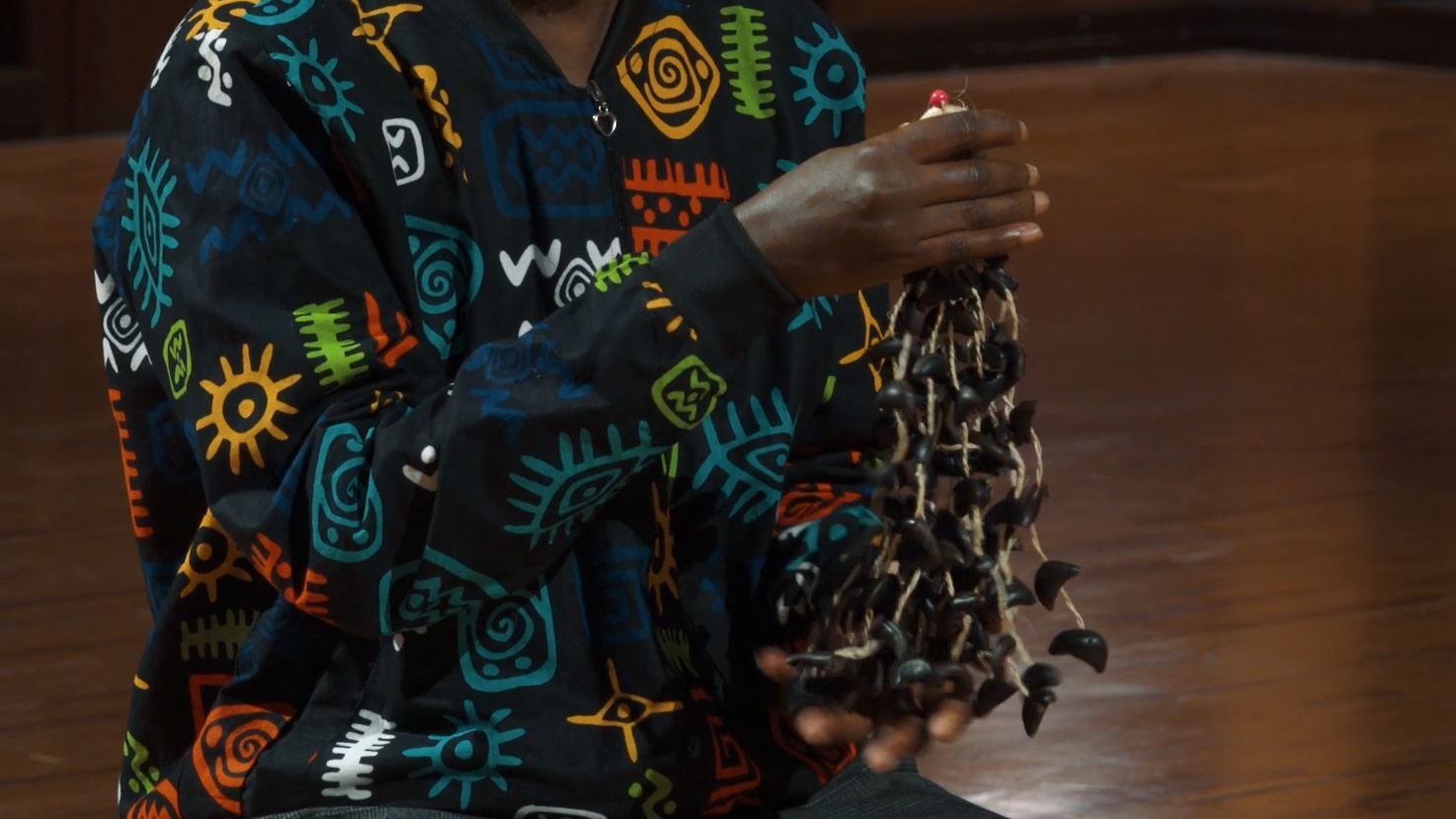
- Instrument type / sound
- A nutshell shaker with a noisy, but warm wooden sound.
- Playing technique
- Shaking, combing, pressing.
- Role in the ensemble and in MIDI grooves
- Free sound association, filling out overall sound.

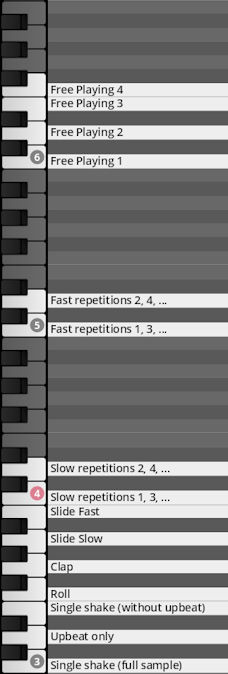
Grooves – West Africa
Some African grooves start with a one-bar signal – mostly on djembe or the djembe-sabar set. The ensemble starts after this introduction.
Coucou
A festive groove in 4/4 time (90–120 bpm). It is played at weddings or after the birth of children.
Djambadon
Is played on sorrowful occasions. 4/4 time at 92–124 bpm.
Kakilambe
A spiritual plea for rain in 3/4 time at 80–116 bpm.
Lamba slow
A dancing groove which expresses happiness and accompanies singing. The slower variant is played in a triplet groove at 96–120 bpm.
Lamba fast
The quicker variation of the lamba is hardly faster if one looks at its 104–128 bpm, but as it employs 16ths instead of 8th triplets it appears to be much quicker.
Nimba
A traditional groove from Senegal and Guinea in 6/8 time at 80–110 bpm (= dotted quarter notes = 53–73).
Sabar Neup
A joyful groove for dancing after a healing or recovery. 6/8 time at 72–96 bpm (= dotted quarter notes = 48-64)
Sarouba
A fast triplet groove from Casamance culture. Casamance is the Senegalese region between Gambia and Guinea-Bissau. Tempo between 124 and 172 bpm.
Touss Sabar
An energetic groove in 3/4 time frequently played at weddings, but often also used by sportspersons (e.g., boxers) to refuel. Tempo between 108 and 140 bpm.
Variation
A fast groove also known as Senegalese Afro Beat. Tempo around 88–130 bpm.

Instruments: daf, daira, daf bass, pandariq, riq, darabuka, tombak, dohol, naghare, tas.

- Instrument type / sound
- A frame drum with metal rings; offers a large spectrum of sounds from bass to slaps and shakes,
- Playing technique
- Held in both hands and played with both hands simultaneously, also shaken.
- Cultural background
- Frame drums are widespread from southern Europe to India in various designs. Our Instrument features a Persian daf. Handled by a professional player, one daf may replace an entire drumset.
- Role in the ensemble and in MIDI grooves
- In the Kurdish/Persian region, dafs play a leading role in the percussionists’ overall sound. Often several musicians play dafs at the same time. A single daf suffices to provide percussive accompaniment for a singer or instrumentalist,

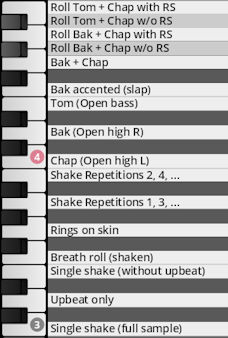
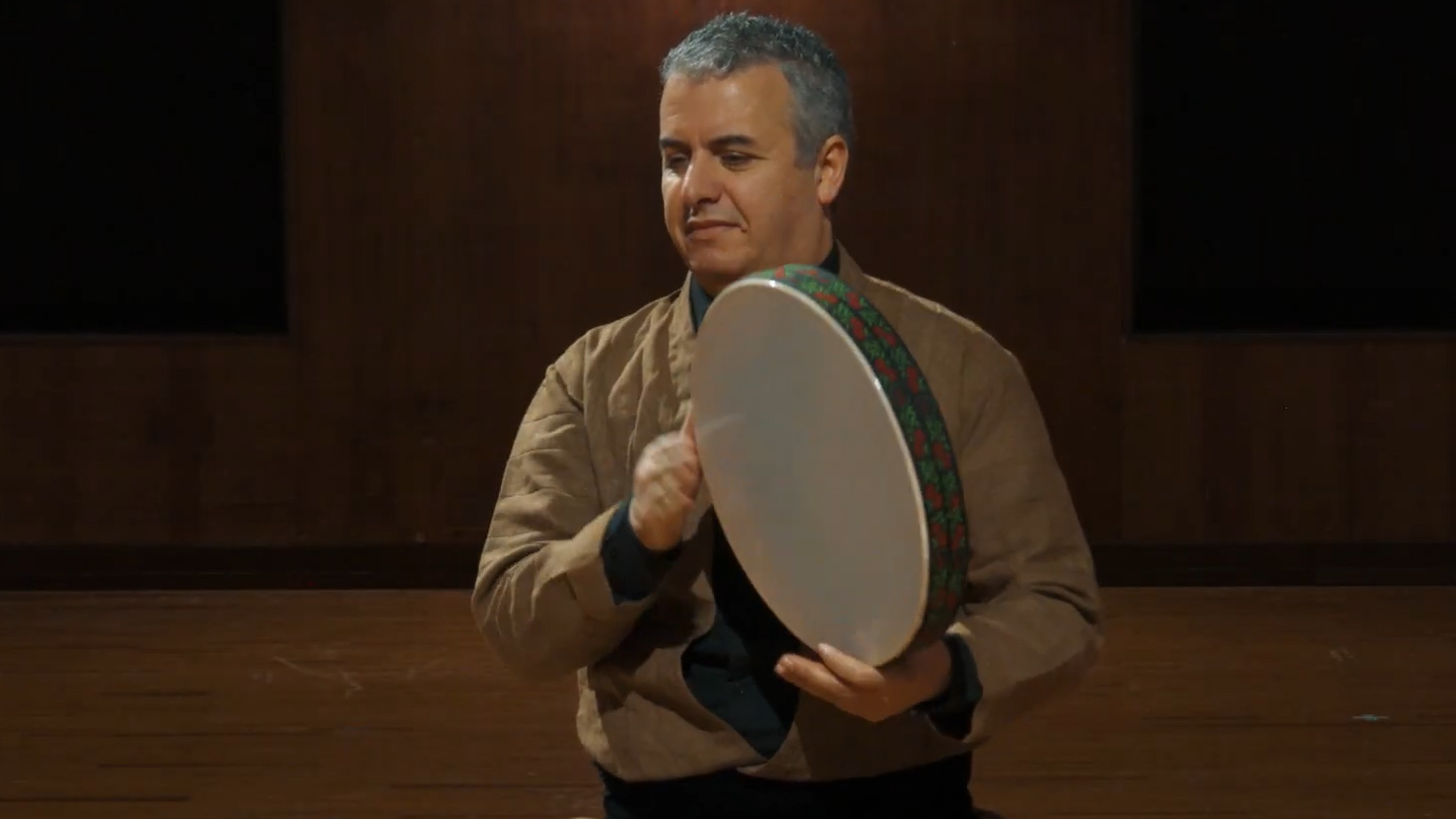
- Instrument type / sound
- The daira is written differently according to region. Like the bigger daf, it is a frame drum with metal rings.
- Playing technique
- Held in both hands and played with both hands simultaneously, also shaken.
- Cultural background
- While dafs are traditionally mostly played by men, the daira rather belongs to women’s folk music.
- Role in the ensemble and in MIDI grooves
- The daira has the same role in the ensemble as the daf.
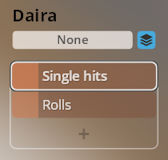
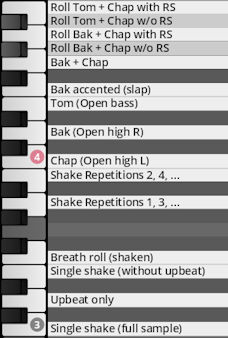
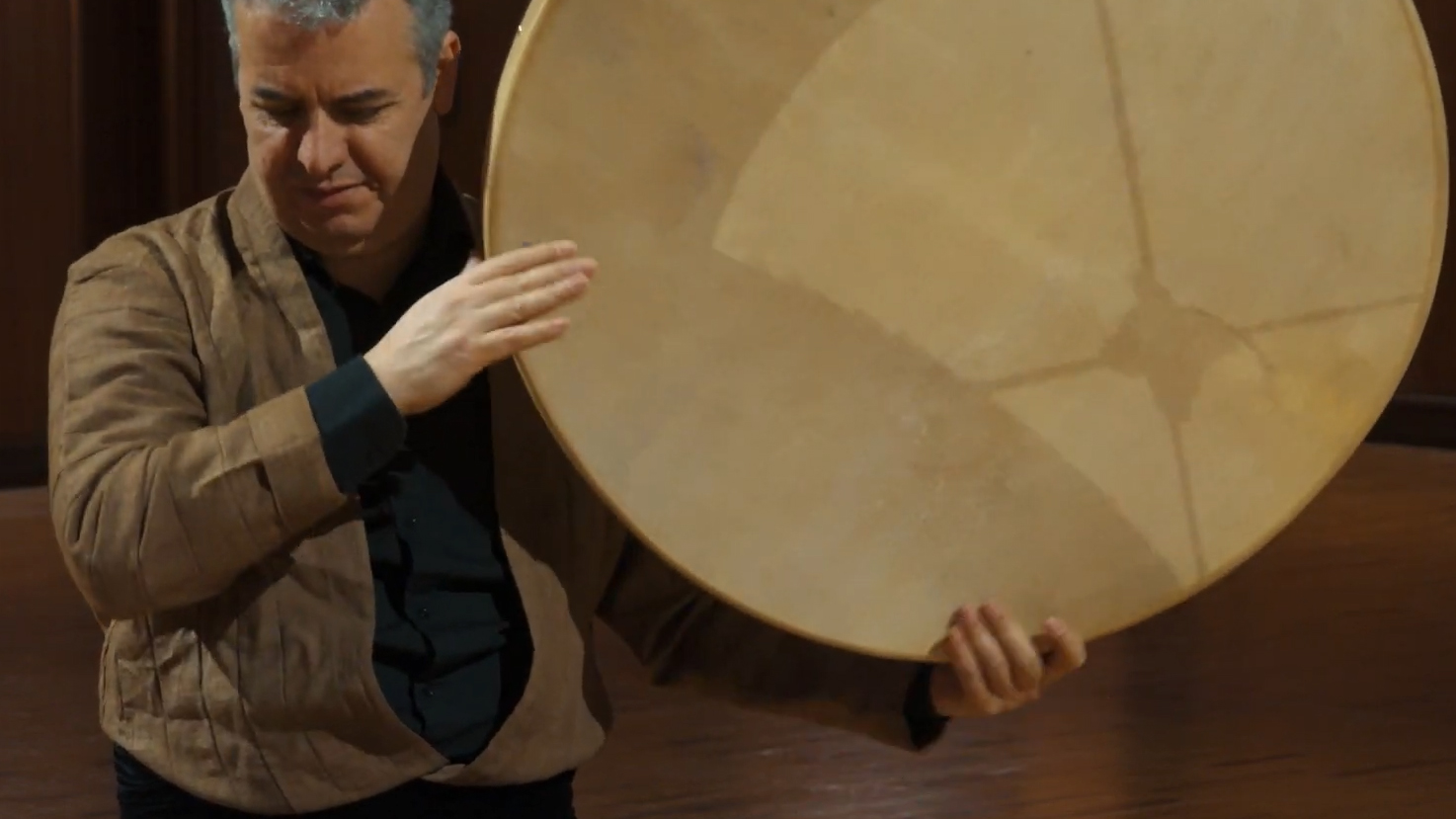
- Instrument type / sound
- A large frame drum with low bass and without metal rings.
- Playing technique
- Held in both hands and also played with both hands at the same time. As the instrument is quite heavy, it may also be wedged between the legs and played with both hands.
- Cultural background
- Large frame drums are widespread in the Middle East,
- Role in the ensemble and in MIDI grooves
- According to the desired sound, the daf bass can replace or complement the “regular” daf with metal rings. Since the drum has no metal rings, its sound is less dense and has more bass.
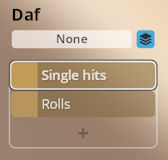
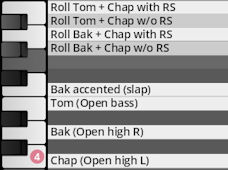
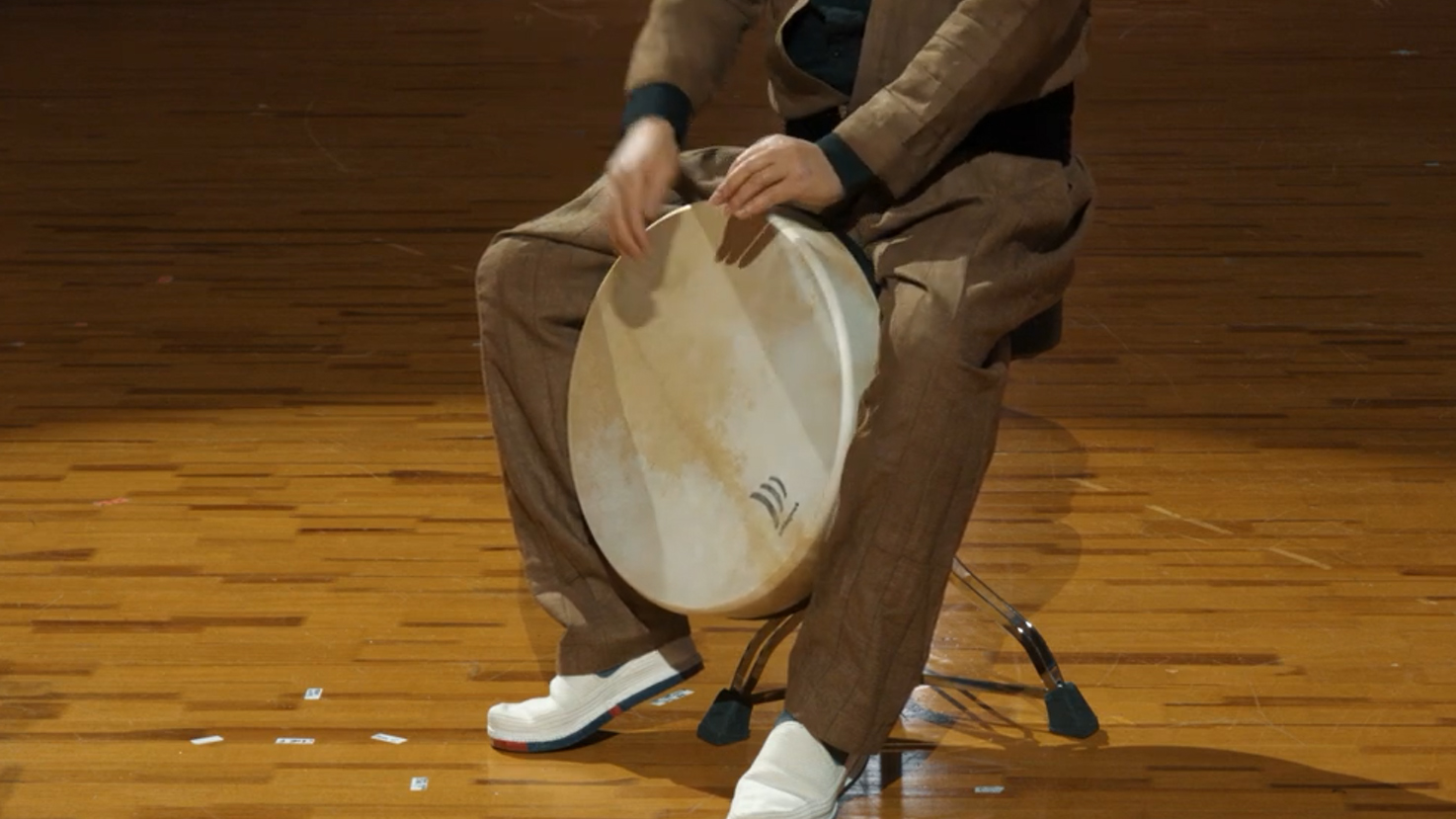
- Instrument type / sound
- A frame drum with detachable jingles developed by the company Schlagwerk.
- Playing technique
- Held and played with both hands simultaneously. As the instrument is quite heavy, the alternative is to wedge it between the legs and play with both hands.
- Cultural background
- The producer “Schlagwerk” describes its development as a mixture between the Brazilian pandeiro, the Afghan daira, and the Arabian riq.
- Role in the ensemble and in MIDI grooves
- The instrument has a similar function as daf and daira, but a somewhat different sound quality.
The Preset features recordings with and without jingles, allowing you to choose the timbre that fits your project.
- Jingles on/off: C1/C#1.
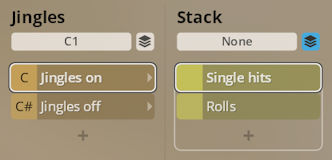
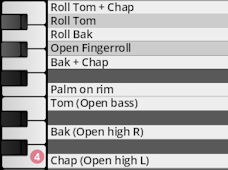
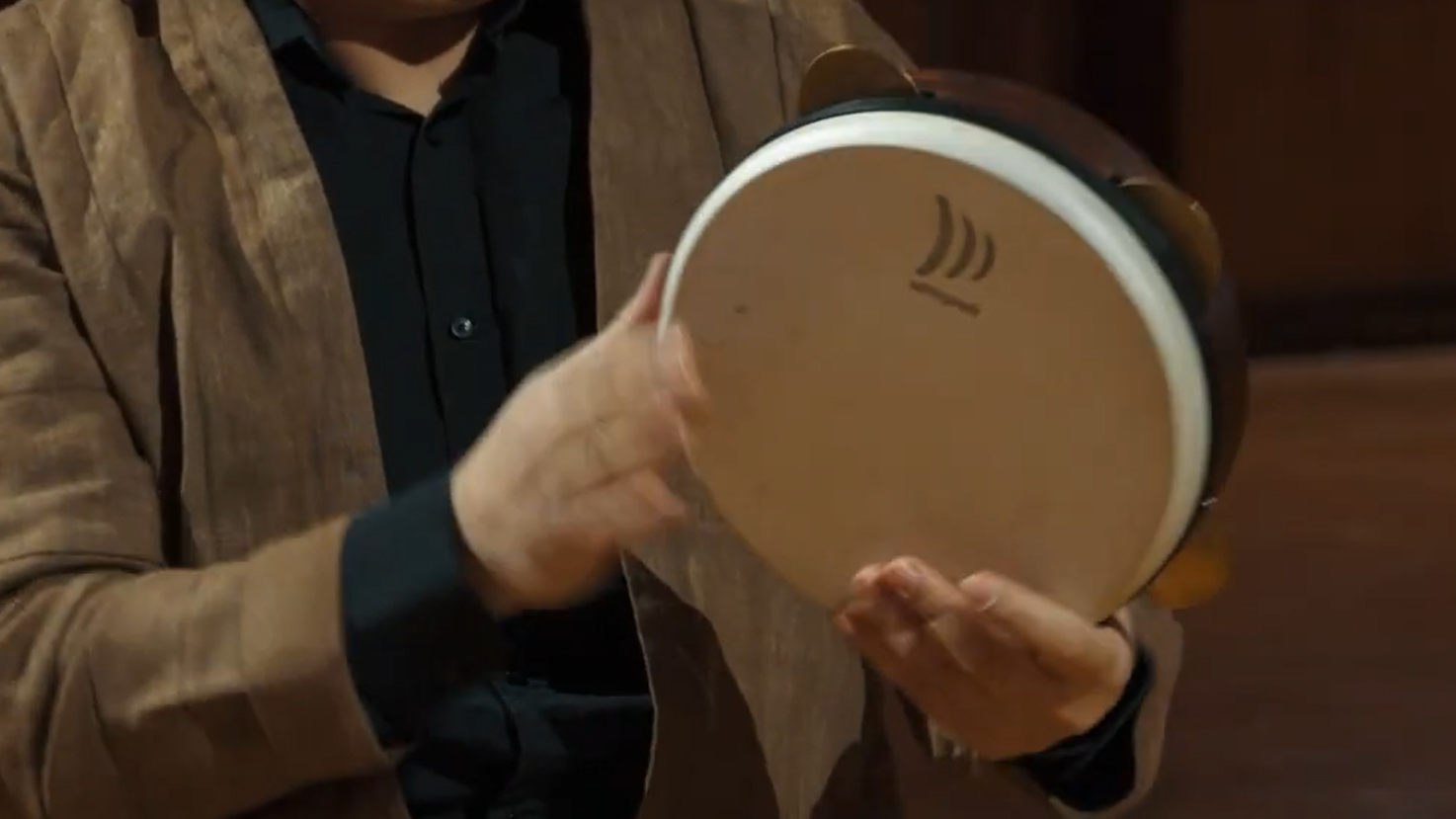
- Instrument type / sound
- The riq, also written riqq, is a small frame drum with jingles in the frame, making it sound similar to a tambourine.
- Playing technique
- The instrument is held with both hands and played on the skin and the jingles.
- Cultural background
- The riq can mainly be found in Egypt, Syria, Lebanon, Palestine, Iraq, and Sudan.
- Role in the ensemble and in MIDI grooves
- Due to its jingles, the instrument is noisier than most other frame drums and has more treble.
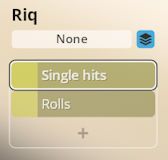
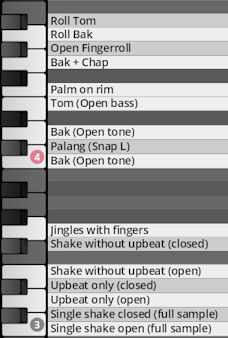
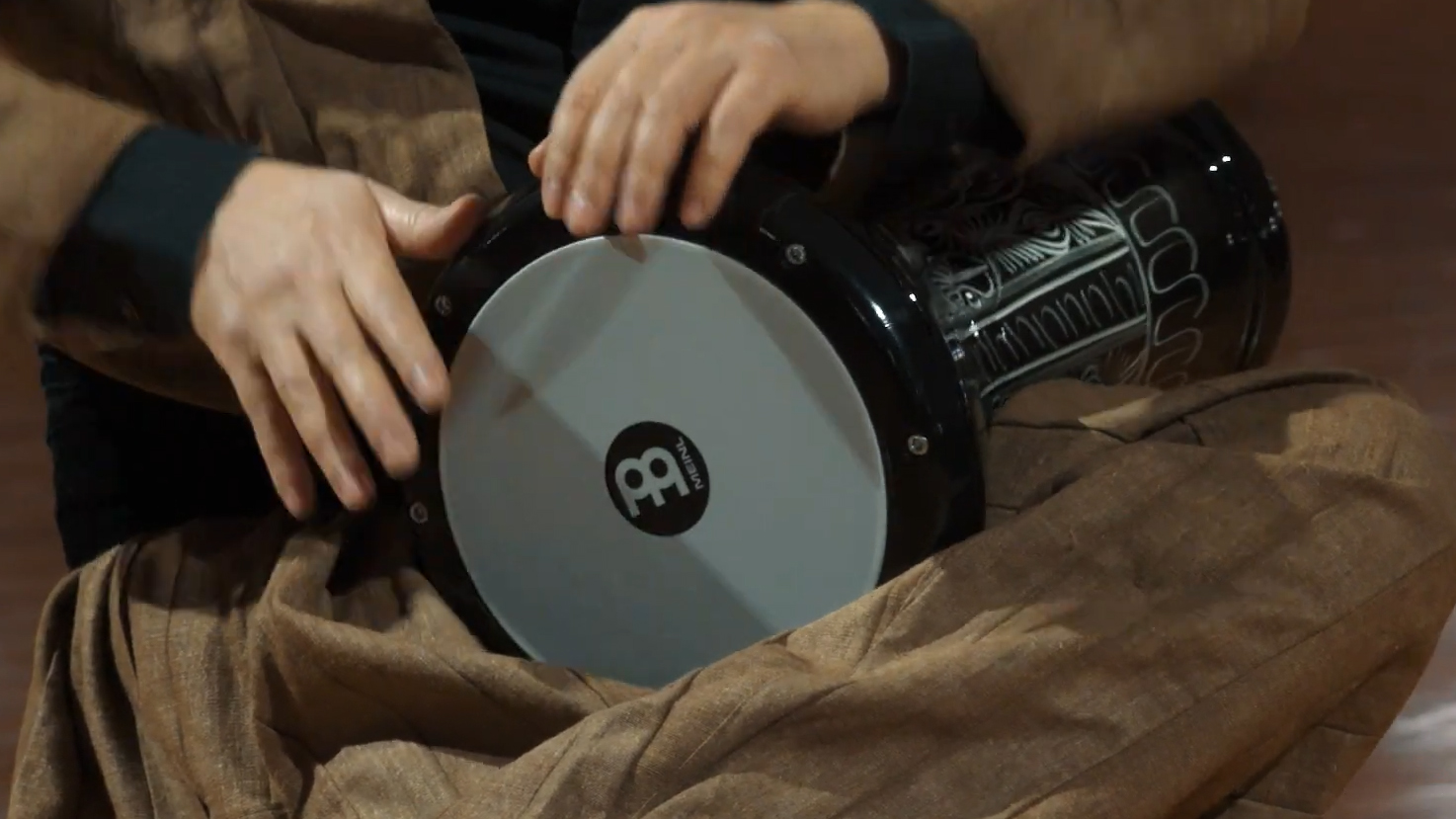
- Instrument type / sound
- There are many different spellings of this goblet drum with a wide sound range from bass over open tones to sharp slaps.
- Playing technique
- The darabuka is placed in the lap and played with both hands.
- Cultural background
- There are many regionally different designs of this instrument in the Near East and the Arab part of North Africa. The instrument we recorded is an Egyptian design.
- Role in the ensemble and in MIDI grooves
- Because of its wide range of sounds, the darabuka can be used as an accompanying instrument in its own right, but also fits into all kinds of ensembles. It was already introduced into the world of Western music as early as 1858 by Hector Berlioz in his opera “Les Troyens”.
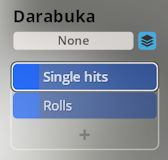
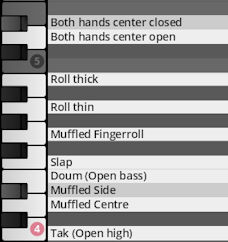
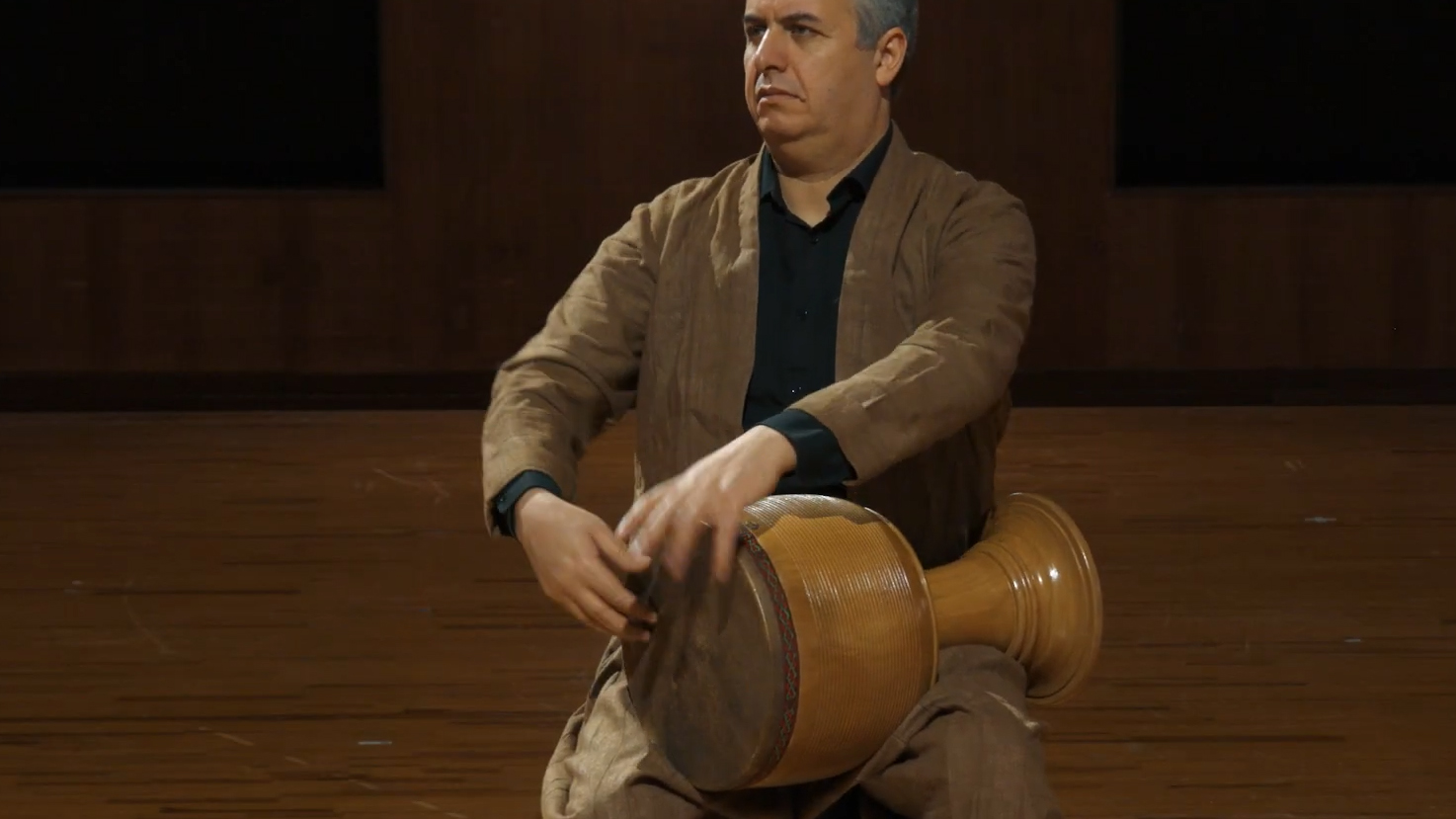
- Instrument type / sound
- Like the darabuka, the tombak is a goblet drum with a wide sound range from bass over open tones to sharp slaps, but with a darker sound.
- Playing technique
- The tombak is placed in the lap and played with both hands.
- Cultural background
- The tombak is the Persian version of the darabuka, and often used in the classical Persian music of Iran.
- Role in the ensemble and in MIDI grooves
- Because of its wide range of sounds, the darabuka can be used as an accompanying instrument in its own right, but also fits into all kinds of ensembles. Some musicians play two different tombaks, or a tombak and a darabuka placed over each other at the same time so they can use the different tone colors.


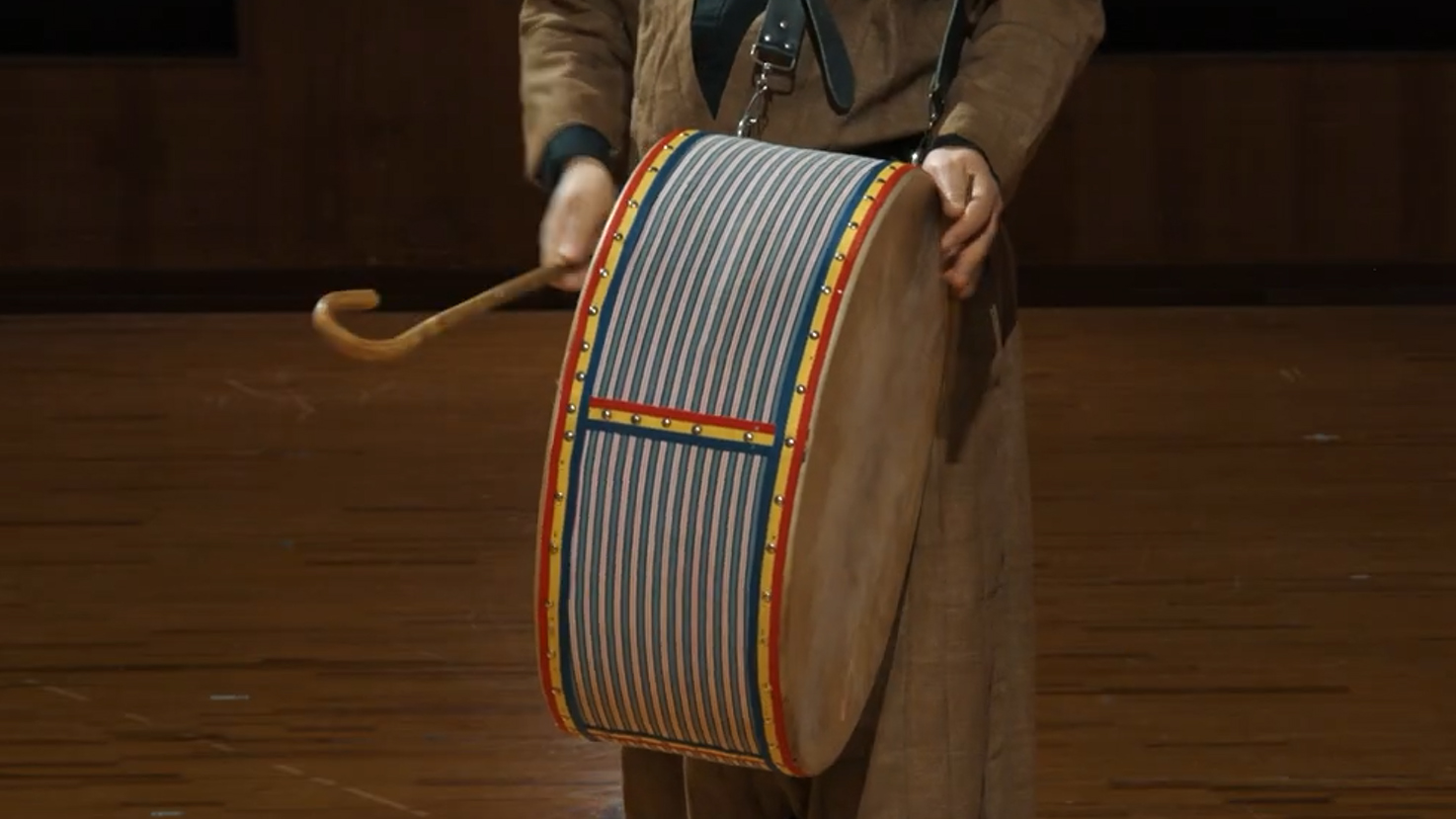
- Instrument type / sound
- The dohol, also called davul, is a large drum with a bassy timbre, but also able to produce bright sounds.
- Playing technique
- The double-sided barrel drum carried in front of the body with a shoulder or neck strap. The right hand holds a bent (so as not to pierce the skin) stick for the bass strokes. The left hand uses a thin, flexible stick for the high strokes.
- Cultural background
- The drum can be found in the entire oriental region and in Eastern Europe. It is considered as the predecessor of the big orchestral drum and supposed to have been brought to western lands by the Turkish janissarys.
- Role in the ensemble and in MIDI grooves
- The dohol ist frequently combined with the zurna, a double-reed instrument. In the percussion ensemble it takes care of the low bass beats.
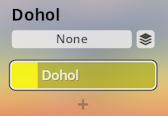

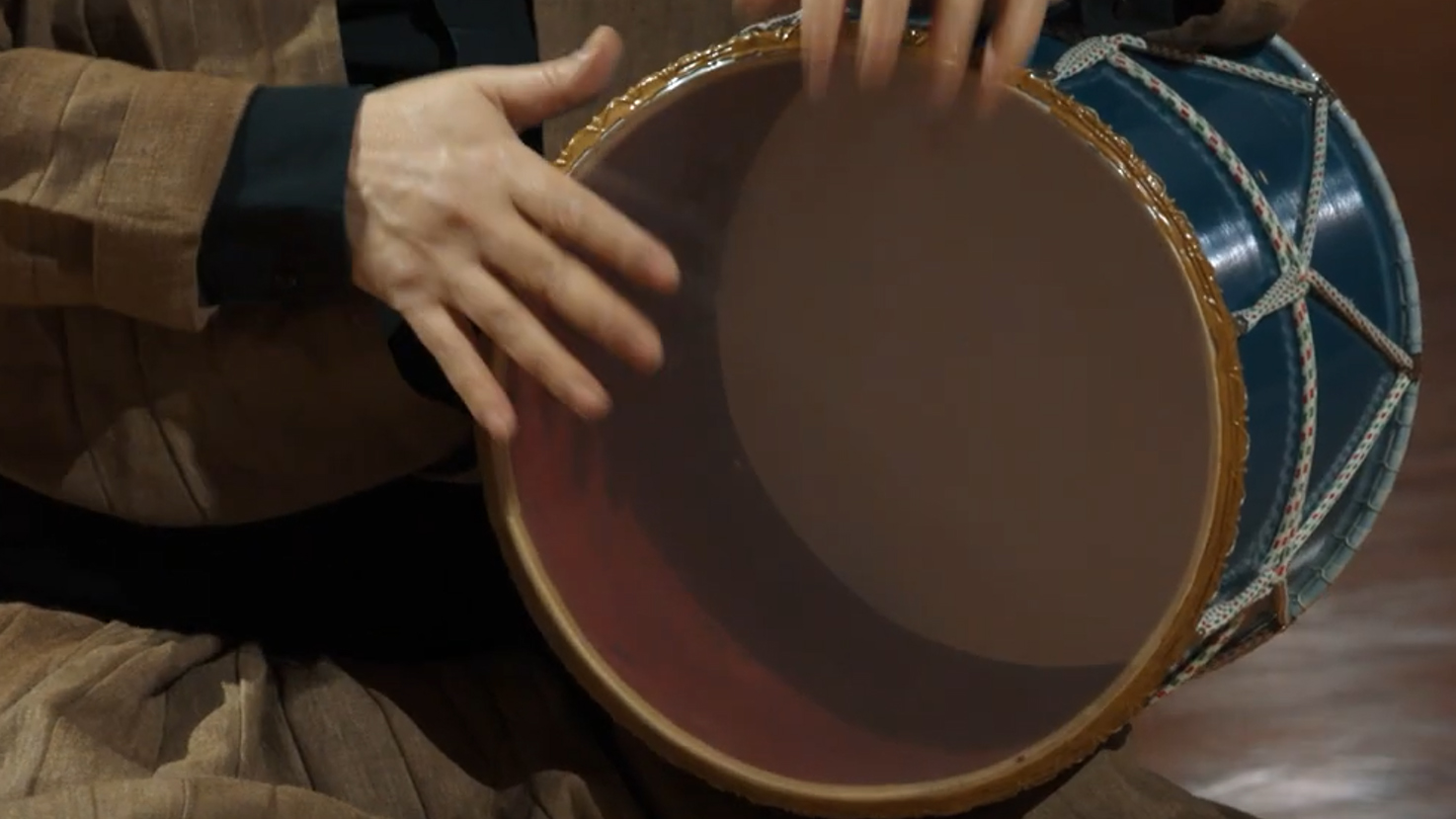
- Instrument type / sound
- The naghare is a cylindrical drum whose sound lies between frame drum and tom.
- Playing technique
- The drum is played sitting, wedged between left leg and left arm, with both hands.
- Cultural background
- This is a traditional Iranian drum. However, for our recordings we used a newer variant from Azerbaijan that can be played on both sides.
- Role in the ensemble and in MIDI grooves
- Since the drum has a similar range of tone colors as frame drums, it can also be used to play the same grooves.
For the Preset, we recorded both sides of the instrument to provide you with a wider range of sounds, as the two sides have a different pitch.
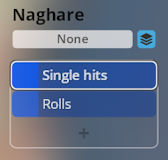
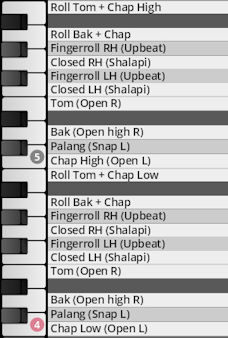
- Instrument type / sound
- The tas is a kettle drum with a bassy sound. The instrument is played with rubber mallets, lending it a smacking attack.
- Playing technique
- The skin is struck from above with two rubber mallets,
- Cultural background
- Kettle drums can be found nearly everywhere in the world in different designs. Our recordings feature a Persian tas.
- Role in the ensemble and in MIDI grooves
- The drum has a limited range of sounds, so that it is mainly used to play fundamental rhythms with slower stroke sequences.
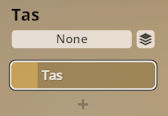

Most of these grooves come from the Persian sound and rhythm systems known as maqamat.
Daem
Quick maqam in 2/4 or 4/4 time. Tempo around 136 bpm.
Garyan
Kurdish maqam in 7/8 time with a 3+2+2 pattern. In spite of its compound time it is also a dance rhythm. Tempo around 148 bpm.
Haddadi
Maqam rhythmically related to daem in 2/4 or 4/4 time. Tempo around 108 bpm.
Hal Gerten
A fast maqam for dancing in 4/4 time. Tempo around 112 bpm.
Hay Allah
Maqam from Sufi mosques in 4/4 time. Tempo around 112 bpm.
Hay Allah Allah
Maqam from Sufi mosques in 5/8 time, played in 3+2+2+3 16ths. Tempo around 82 bpm.
Maddahi
Maqam in 3/4 time. Tempo around 84 bpm.
Saghgehzi
A Kurdish dance in 6/8 time, can be alternated with Hal Gerten. Tempo around 165 bpm.
Shirazi
A song accompaniment in 5/8 time (2+3), where every fourth measure is mostly shortened to 4/8. Tempo around 79 bpm.
Sufic celebration
This is a favorite at Sufi festivities. Its 22/8 consist of 3/8 and 2/8 groups: 3+3+2+3+2+3+2+2+2. Tempo around 168 bpm.
Zekr E Dovvom
A maqam in 4/4 time. Tempo around 128 bpm.

Instruments: Pandeiro, surdos, tamborim, ciuca, snare, repinique, chocalho, shaker, agogo bells, timbau, reco-reco.
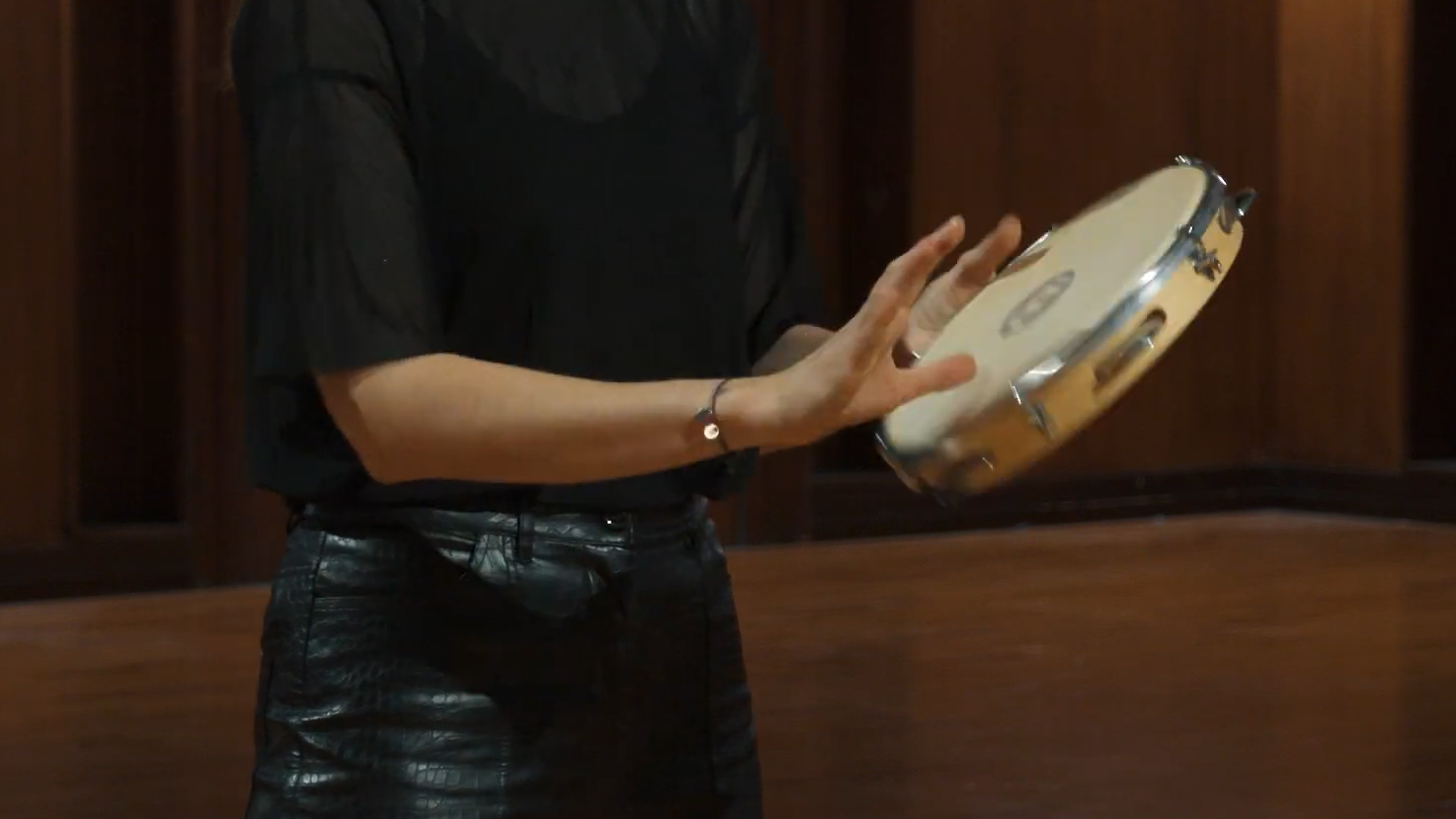
- Instrument type / sound
- A little to medium-sized frame drum with jingles in the frame, similar to a tambourine.
- Playing technique
- The instrument is held in one hand and played with the other, often with so-called “floating-hand” movements.
- Cultural background
- The pandeiro is a typical instrument of the Brazilian samba schools.
- Role in the ensemble and in MIDI grooves
- The pandeiro provides a rhythmical basis running through a sequence of different strokes. Accents in the meldody are also emphasized.
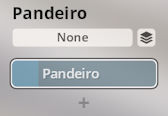
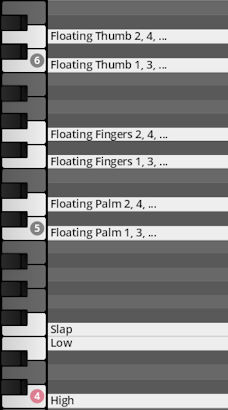
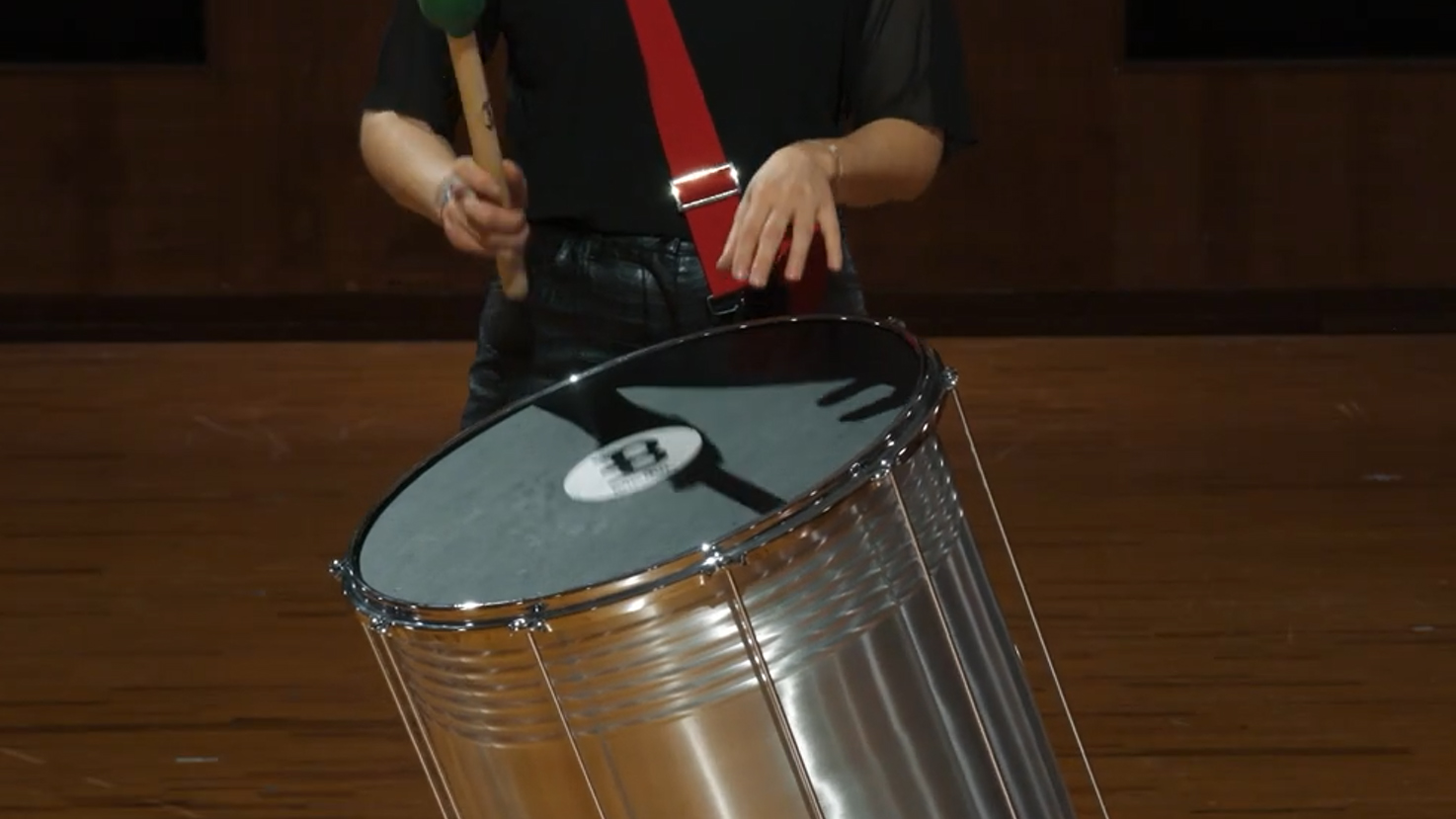
- Instrument type / sound
- Surdos are large cylindrical drums with a saturated, bassy sound.
- Playing technique
- Surdos are carried in front of the body with a sling. One hand plays with a samba mallet, while the free other hand not only plays audible strokes, but also is used to damp the skin.
- Cultural background
- The surdo drum is one of the largest and most important percussion instruments of the Brazilian bateria de samba. It provides the rhythmical basis of the pieces, and therefore are highly responsible for controlling playing speed.
- Role in the ensemble and in MIDI grooves
- Surdos are normally played in three pitches, the lower two (primeiro and segunda) mainly take care of the pulse. The higher tuned terceiro plays the actual surdo pattern.
The Preset features the three typical sizes and pitches of surdo, which can be played individually. Analogous to the instrument’s playing technique, the hand strokes are mapped to the left of the keyboard, stick strokes to the right.
- Surdo low/medium/high: C2–D2.
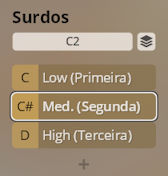
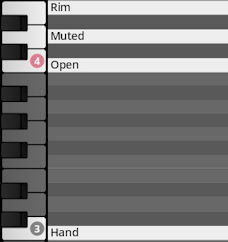
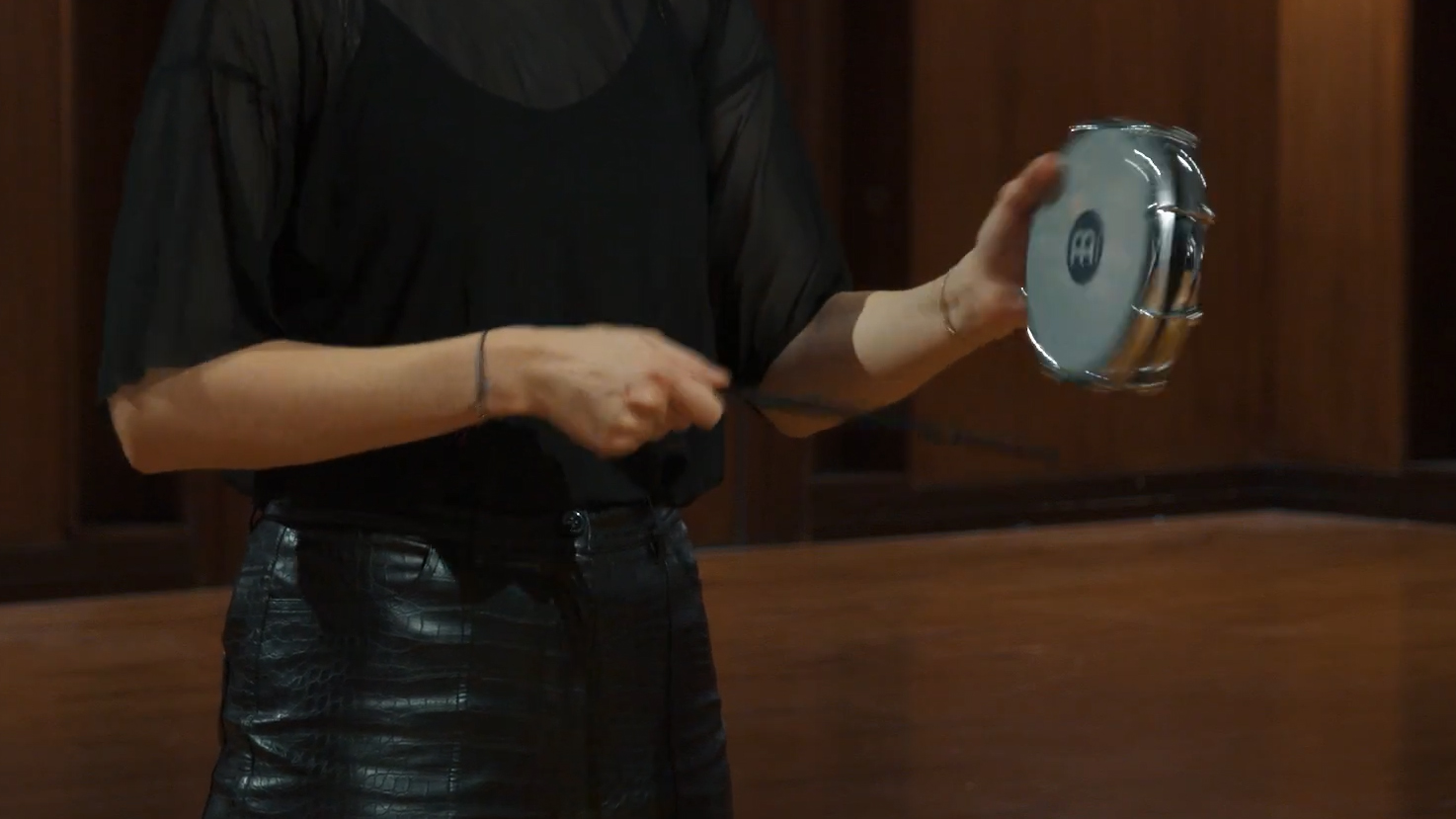
- Instrument type / sound
- The tamborim is a small frame drum. As opposed to the tambuorine, it has no jingles. The sound is high, noisy, and short, i.e., without resonance.
- Playing technique
- The tamborim is mostly played with a plastic whip called “baqueta” while the holding hand executes a turning motion.
- Cultural background
- The tamborim is part of the Brazilian samba percussion.
- Role in the ensemble and in MIDI grooves
- Tamborims are often played in groups. In the samba batucada they play a voice of their own over the basic rhythm, thus lending structure to the piece.

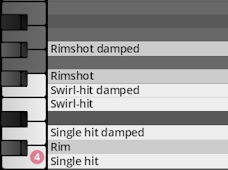
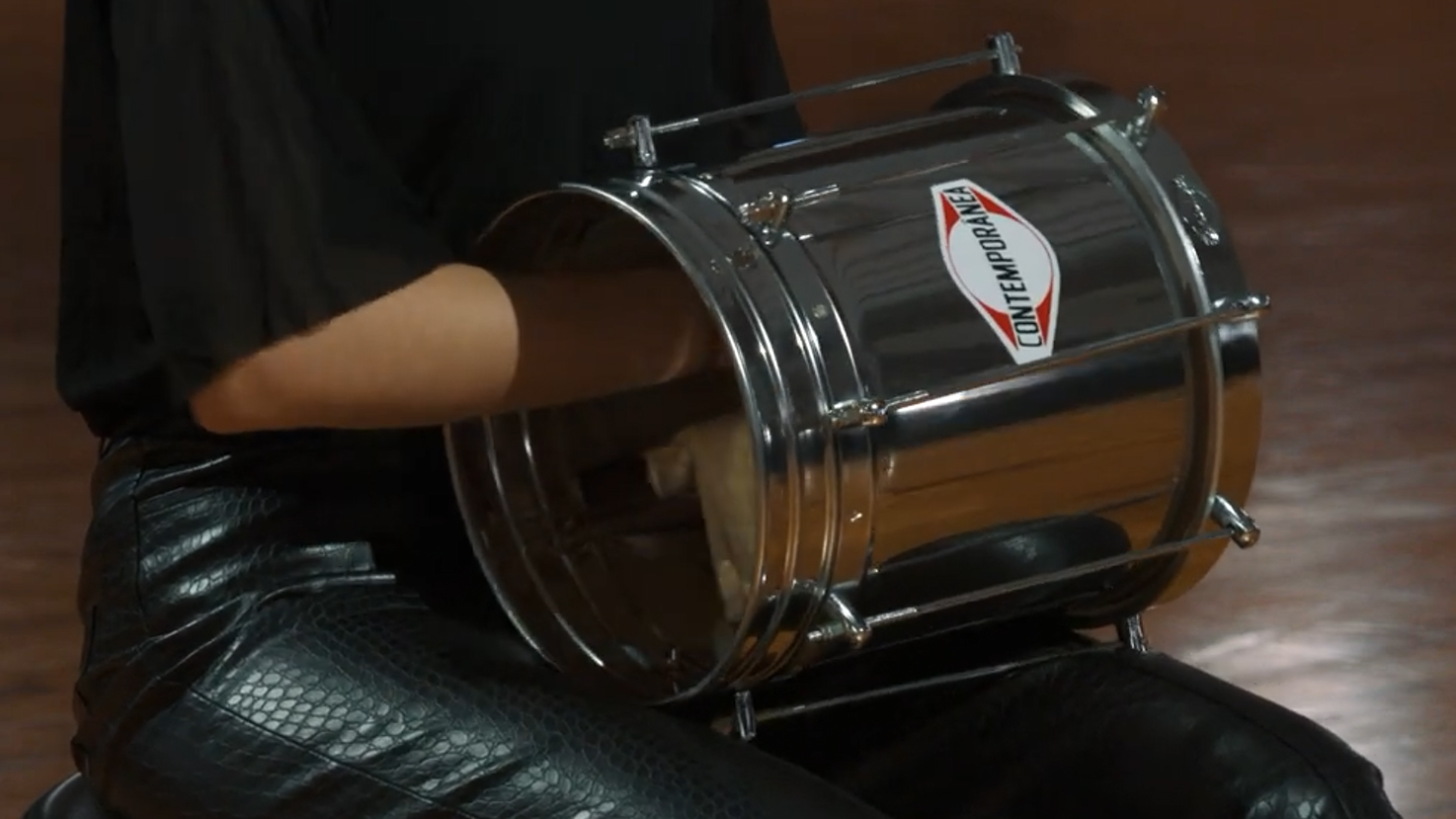
- Instrument type / sound
- A friction drum with a squeaking to buzzing sound.
- Playing technique
- A stick mounted on the skin of the drum is rubbed with a damp piece of cloth. Pitch can be controlled with the amount of pressure.
- Cultural background
- The cuíca is a relative of the European instruments waldteufel and lion’s roar, and mainly used for samba music in Brazil.
- Role in the ensemble and in MIDI grooves
- In Brazilian music the voice of the cuíca plays solo over the basic rhythm, so to speak. Rhythmically it is given lots of freedom.

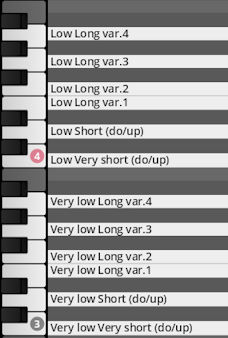
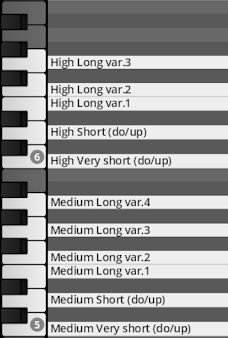
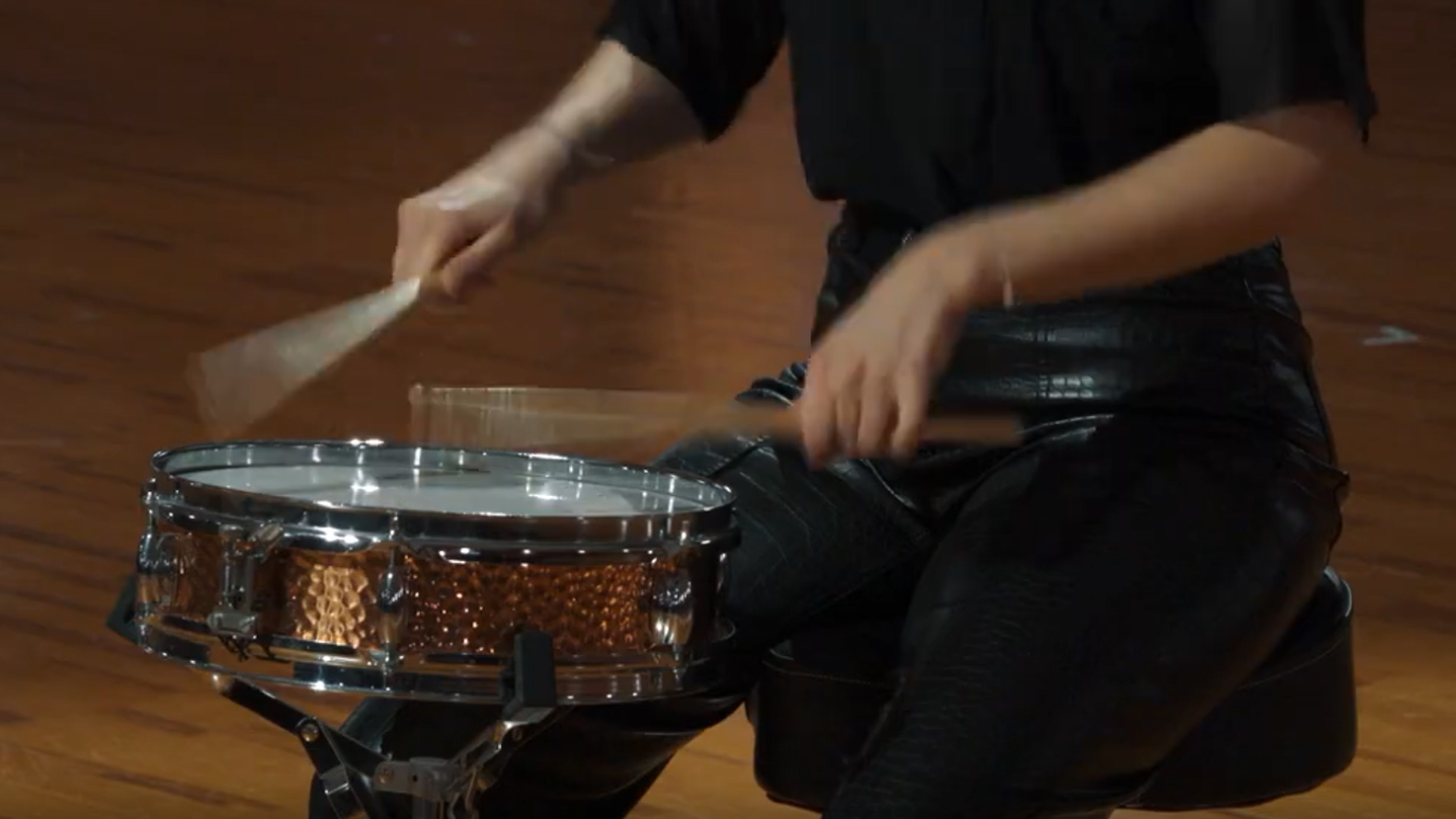
- Instrument type / sound
- A flat cylindrical drum with stiff wires (snares) crossing its resonance skin on the underside.
- Playing technique
- Played mostly with drumsticks, but also with rods, brushes, hands, or soft mallets.
- Cultural background
- The first instruments resembling a snare drum can already be found in antiquity. They were exclusively used for military purposes, but gained importance in western music in the 18th century, when they were often used in operas. In the middle of the 19th century they also entered the concert stage. Today, snare drums and their relatives are available in various sizes and made out of different materials.
- Role in the ensemble and in MIDI grooves
- The smacking, shot-like sound of the snare drum often evokes military associations. Its sound characteristics with a strong attack and rapid decay allow rhythms to be played and perceived very precisely. In Brazilian rhythms the snare drum provides basic patterns and accents.
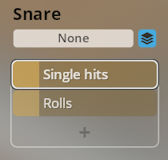
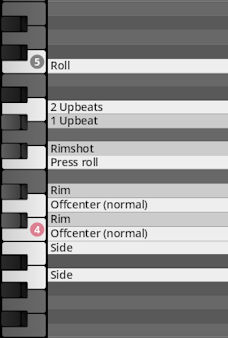
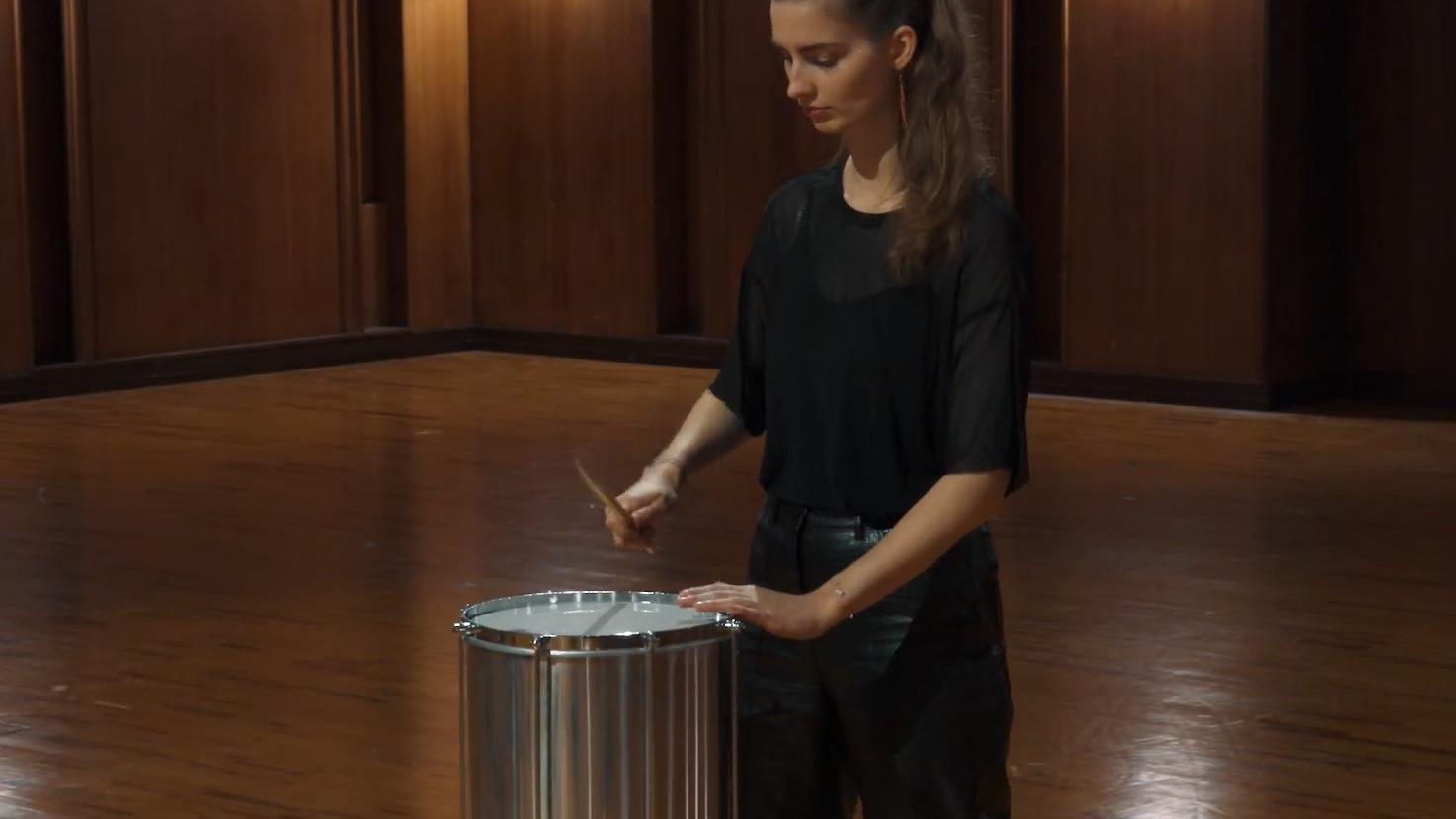
- Instrument type / sound
- The repinique is a cylindrical drum, in build and function between the highest surdo (terceiro) and the snare drum. As the skin is stretched very tightly, its sound is similar to that of a snare drum played with detached snares.
- Playing technique
- Depending on style, either with two drumsticks or with one drumstick and one hand.
- Cultural background
- The repinique is the Brazilian variant of the snare drum, its build rather similar to that of a small surdo. Originally a wooden drum with goat skin, nowadays it is mostly made of metal with a nylon or plastic skin, making its sound distinctly higher and sharper.
- Role in the ensemble and in MIDI grooves
- In the samba group, the repinique often plays an accent with the hand before the beat proper. Because of its high, assertive sound, the repinique is also often used for “calls” and cues.
Analogous to the instrument’s playing technique, the hand strokes are mapped to the left of the keyboard, stick strokes to the right.

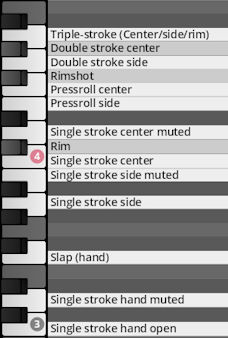
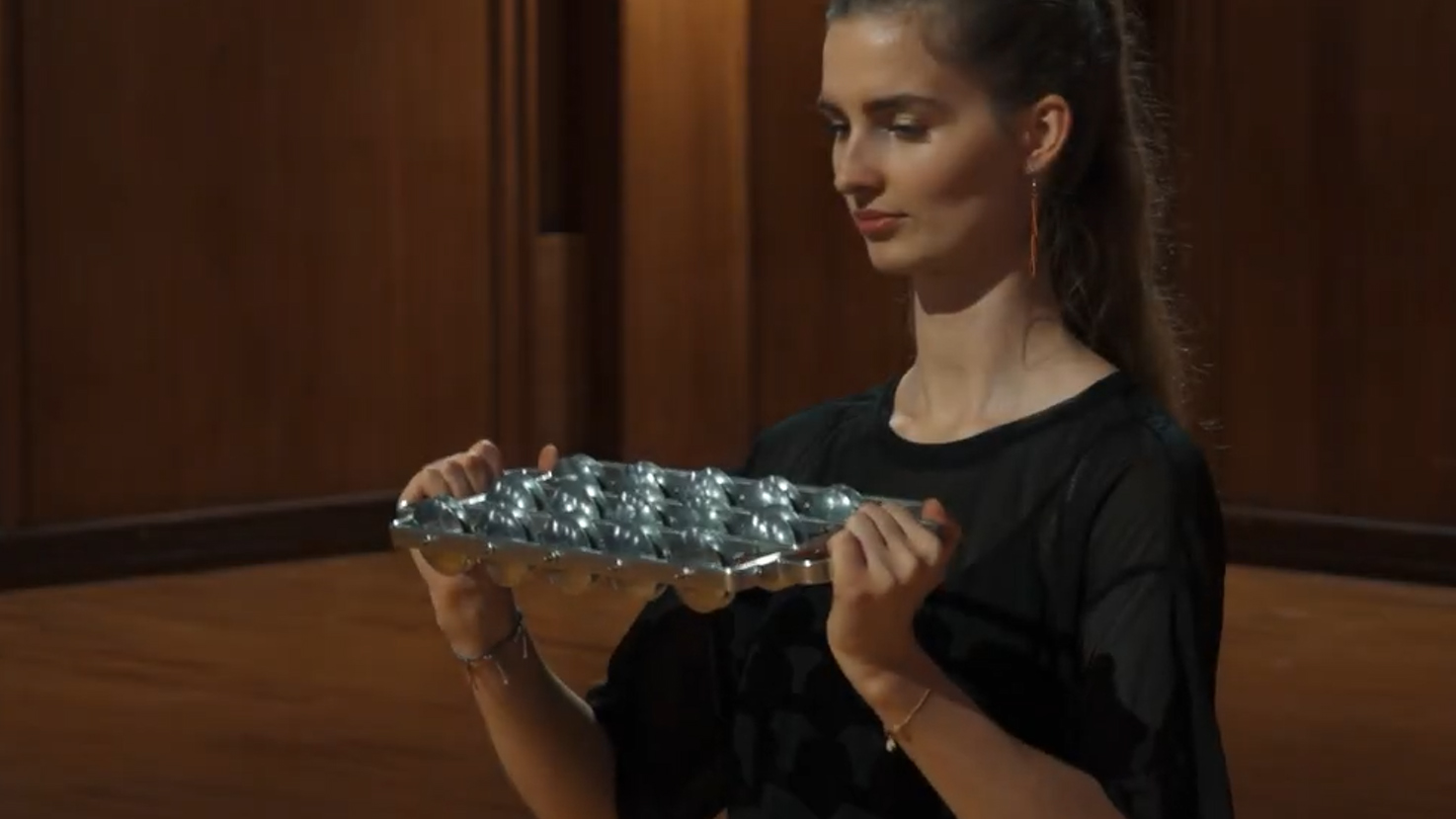
- Instrument type / sound
- The chocalho is a stick rattle made of metal with numerous tin lamellas, and sounds like a loud metal shaker.
- Playing technique
- Chocalhos are shaken out of the wrist joint at the height of the head.
- Cultural background
- The chocalho was developed in Brazil to be able to create a fast, dense, and loud rhythmical background layer for samba music.
- Role in the ensemble and in MIDI grooves
- Like the repinique, the chocalho is mostly used to play accents.

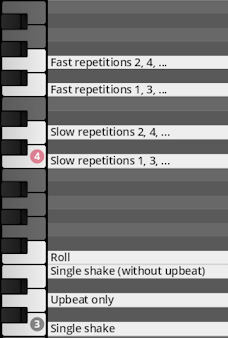
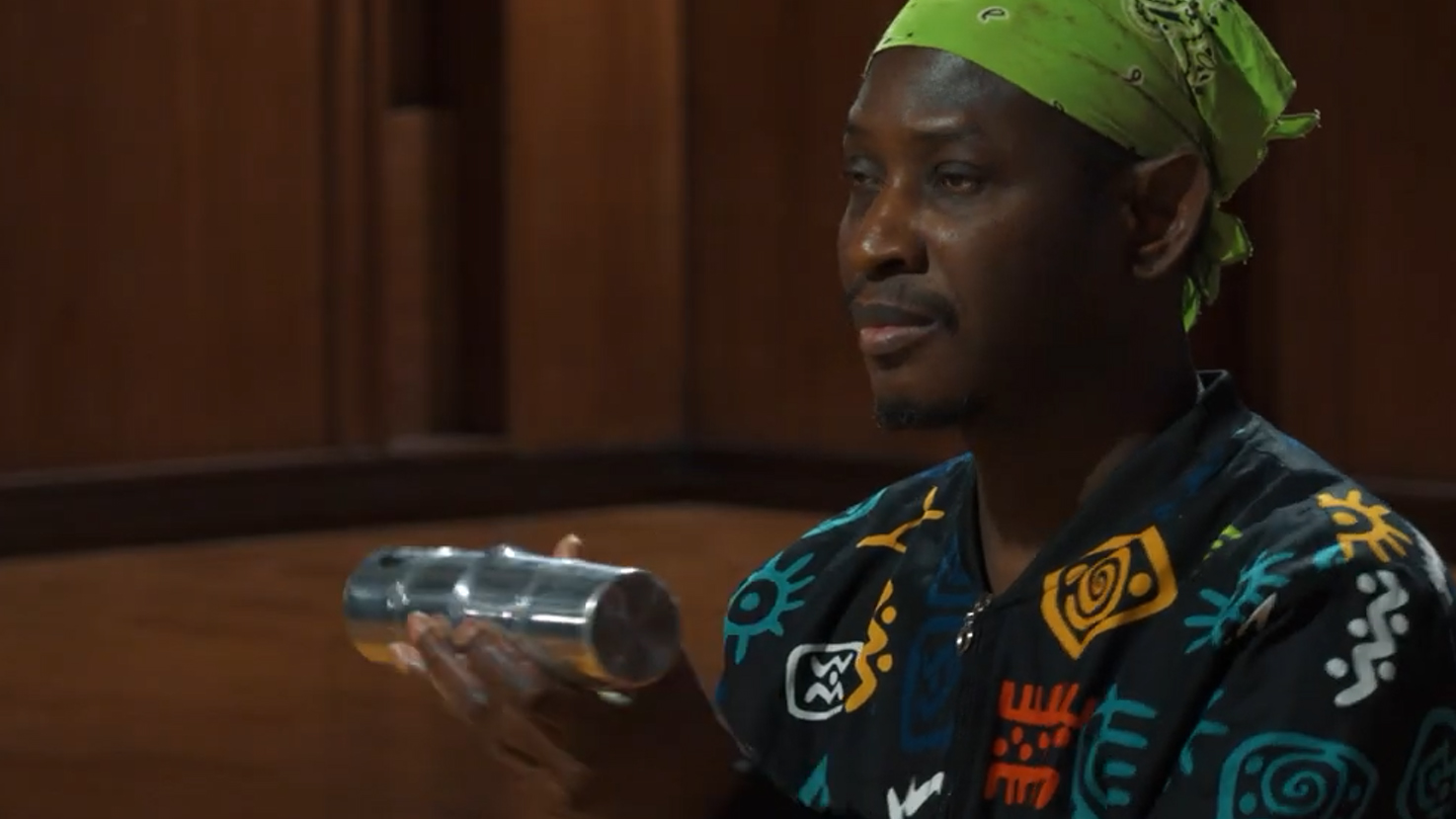
- Instrument type / sound
- A closed rattle with a bright, noisy sound.
- Playing technique
- Shake it!
- Cultural background
- Shakers are primarily used in Latin American and Brazilian music, but today have conquered the whole world. They are often employed in rhythmical music.
- Role in the ensemble and in MIDI grooves
- Rhythmical background layer.
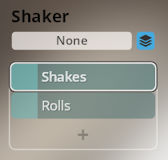
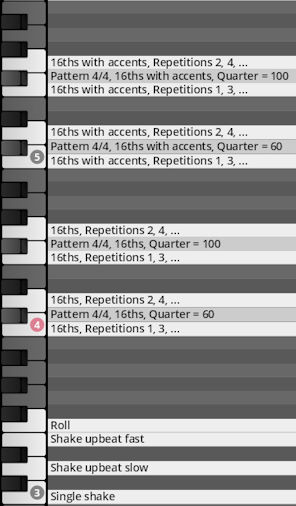
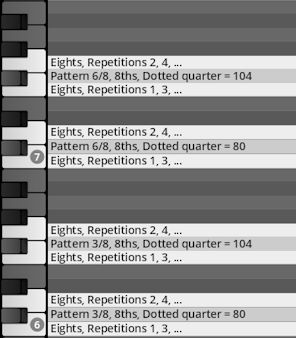
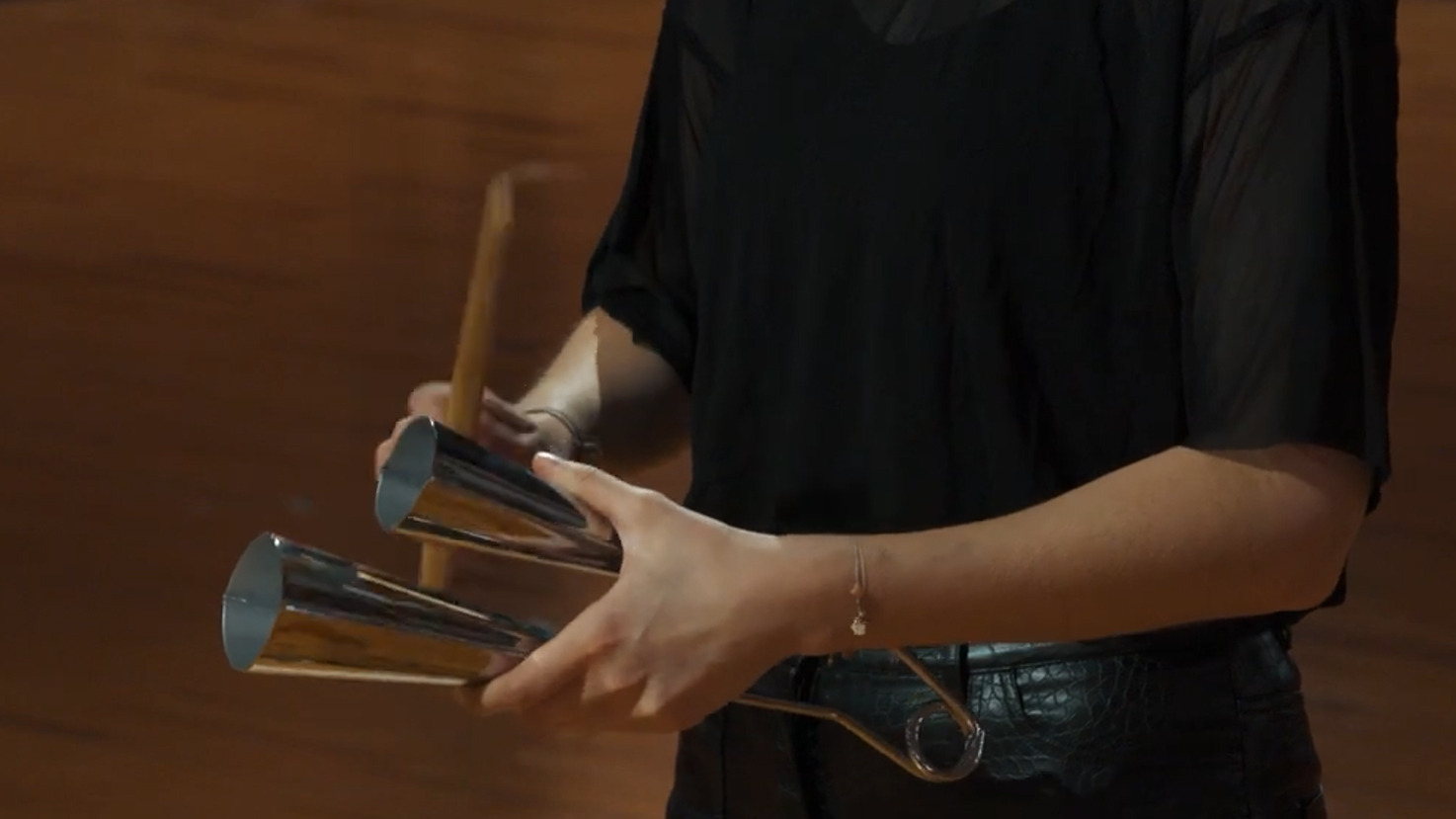
- Instrument type / sound
- Two metal bells joined together by a hoop, with a bright, bell-like, assertive sound.
- Playing technique
- The bells are held in one hand and played with a stick in the other. They can be played open or muted.
- Cultural background
- Originally, agogo bells come from Nigeria. They were brought to South America by slaves and were soon incorporated in Brazilian and Cuban music.
- Role in the ensemble and in MIDI grooves
- Agogos often play a clave-like basic rhythm, sometimes also playing around the fundamental pattern.
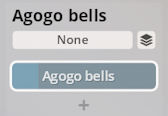
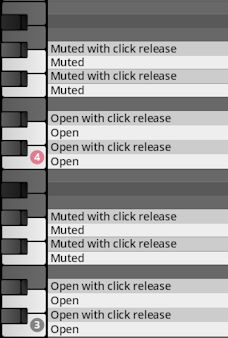
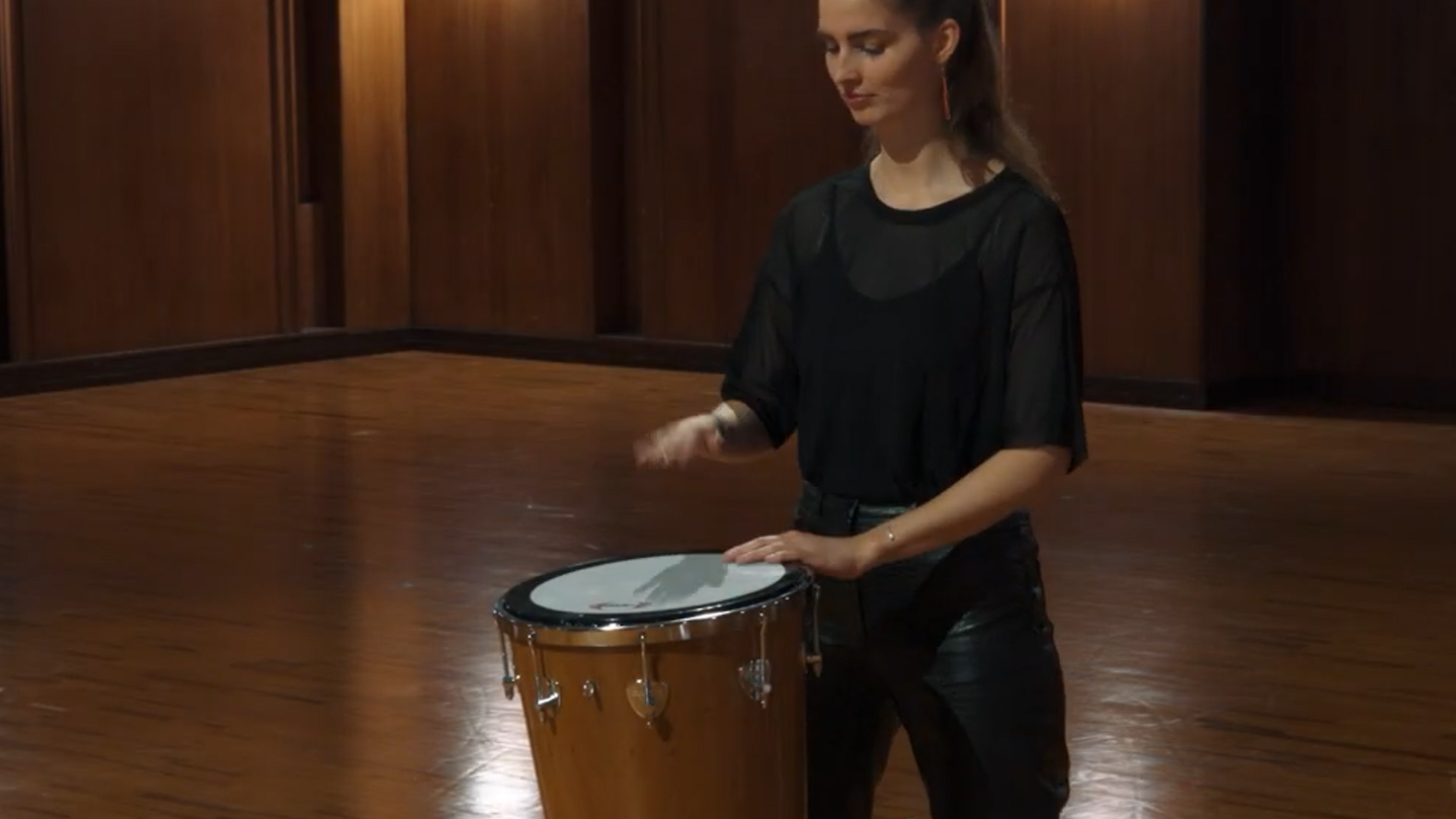
- Instrument type / sound
- The timbau, also called timba or timbal, is a conical, elongate hand drum with a wide range of sounds.
- Playing technique
- The drum can be carried in front of the body with a shoulder belt or put on a stand, and is played with both hands.
- Cultural background
- The contemporary timbau is a relatively young instrument that has existed in this form only since the 1980s. It was developed out of the “surdo de mao”, a hand surdo placed across the knees, and today is an important instrument of samba reggae.
- Role in the ensemble and in MIDI grooves
- The timbau plays basic rhythms with bassy, open, and slap strokes.

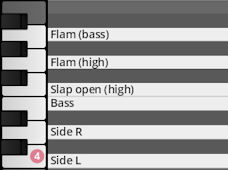

- Instrument type / sound
- Originally wooden, but nowadays mainly made of metal, the reco-reco is a scraping instrument with a tinny, noisy sound.
- Playing technique
- Similar to the guiro, sound is produced by rapid up and down movements with a stick on a grooved surface.
- Cultural background
- The guiro originally comes from Central America. The reco-reco is its Brazilian version, and has a louder and more assertive sound.
- Role in the ensemble and in MIDI grooves
- Reco-Recos play basic rhythmic patterns. They are a typical part of Brazilian music styles including samba.
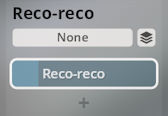
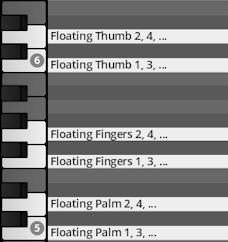
So-called samba schools are found everywhere in Brazil. They are not schools in a narrower sense, but clubs for dancing, marching, and drumming. The following grooves are played by the Brazilian percussion ensembles or baterias.
Ijexá
A 4/4 rhythm often used for songs, dances, and processions. Tempo around 100 bpm.
Samba Batucada
The batucada is a fast sub-species of the samba typically played by Brazilian percussion ensembles. Tempo around 138 bpm.
Samba de Partido Alto
A rhythm from Rio de Janeiro often used for songs with a jazz context. Tempo about 80 bpm.
Samba Reggae
Samba Reggae is a music genre that developed out of the Black Pride movement. It combines Brazilian samba with Jamaican reggae. Tempo around 80 bpm.

The .zip file you can download with the Vienna Assistant contains one Vienna Ensemble Project for each region of the Synchron World Percussion Library. These are designed to provide you with perfectly set up rhythm sections which will work in combination with the “Full Ensemble” grooves you can find in the MIDI Loop Player of your Synchron Player.
In your sequencer, insert a multi-timbral version of Vienna Ensemble / Pro.
Use drag & drop to load the VE project of the region you’d like to access into an empty instance of Vienna Ensemble / Pro, and you will see all the instruments lined up!
Open the MIDI Loop Player in the Synchron Player and find the “Full ensemble for DAW” folder.
Attention: If you are using VE Pro on a remote computer, you can drag the MIDI file, e.g., to a networked drive and drag it to your sequencer from there.
Multiple MIDI Channels with the correct naming and MIDI routing will open right away.
Double-check that tempo, time signature and port assignment are correct, and you’re ready to play back the fascinating rhythms our musicians played for you at Vienna Synchron Stage!
On this page
- Introduction
- Standard and Extended Content
- Mixer Presets
- Vienna Ensemble Projects
- Musicians
- 01 West Africa
- 01 Djembes
- 02 Sabar drums
- 03 Talking drums
- 04 Doum doums
- 05 Shekere
- 06 Caxixi
- 07 Bell straps
- 08 Cabalonga
- Grooves – West Africa
- 02 Middle East
- 01 Daf
- 02 Daira
- 03 Daf bass
- 04 Pandariq
- 05 Riq
- 06 Darabuka
- 07 Tombak
- 08 Dohol
- 09 Naghare
- 10 Tas
- Grooves – Middle East
- 03 Brazil
- 01 Pandeiro
- 02 Surdos
- 03 Tamborim
- 04 Cuíca
- 05 Snare
- 06 Repinique
- 07 Chocalho
- 08 Shaker
- 09 Agogo bells
- 10 Timbau
- 11 Reco-reco
- Grooves – Brazil
- Working with Vienna Ensemble Projects